LA Times
From 2001-2007, the L.A. Times chronicled the progress of the Chouinard Foundation in numerous articles. These articles, written mainly by art writer Suzanne Muchnic, form an articulate summary of the Chouinard Foundation’s accomplishments. Numerous magazine articles were written by top art writers concerning the progress of the Chouinard Foundation as well.
LA Times Culture Monster
Chouinard, the influential L.A. art college
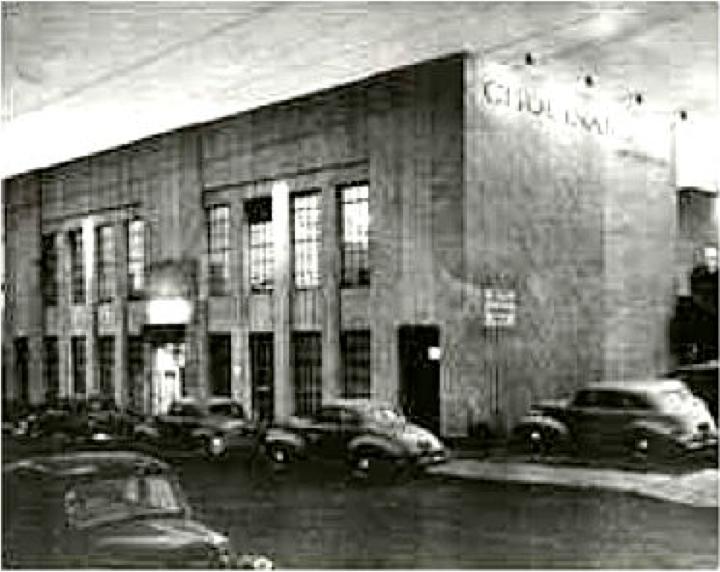
Chouinard Art Institute has come to life for the third time in 90 years — this time on the Web, where the high overhead costs that eventually sank the original, highly influential school in 1972 and blunted an attempted revival during the 20005 no longer will be a factor.
The Chouinard Foundation website is devoted to telling the story and documenting the influence of the art college (pictured) that a war widow named Nelbert Murphy Chouinard (pronounced shuh-nard) launched near downtown L.A. in 1921, continuing for more than 50 years until it was contentiously consumed in the creation of Cal Arts.
The Chouinard alumni roster includes Robert Irwin, Ed Ruch, Larry Bell, Allen Ruppersberg, Hollywood costume designer Edith IIead, graphic artist .John Van Hamersveld (designer of The Endless Summer” film poster and the Beatles’ “Magical Mystery Tour” and the Rolling Stones’ “Exile on Main Street’ album covers) and the “Nine Old Men,” the crew of animators who played vital roles in the triumph of Walt Disney.
The site offers videos, news articles and historical background on Chouinard’s initial run and the activities of the Chouinard Foundation, which began improbably in 1999 after Dave Tourje, an artist, guitarist and construction company owner, bought Nelbert Chouinard’s 1907 home in South Pasadena as a fixer-upper without knowing much about her, then became enthralled with the notion of restoring her legacy along with her former domicile.
Tourje and the late Robert Perine, an Orange County designer and Chouinard alum who created advertising graphics that helped push Fender guitars to world dominance, started the foundation and in 2003 opened a new Chouinard in a restored, 1901-vintage brick building in South Pasadena. Money problems forced it to close in 2006, but the foundation remained active, running art courses through 2009 in partnership with L.A.’s Department of Recreation and Parks.
Tourje says he began focusing on creating the website about 18 months ago. Its features include images from an archive of work by former Chouinard students, as well as places for Chouinard loyalists to share their recollections and photographs from student days.
One comment already posted is from Ruscha, who was at Chouinard during the late 1950s: “While another art school in the area had dress codes (ie: Art Center: no facial hair, no sandals, no bongo drums) Chouinard was free and easy. Shall I say more freedom for everyone? It was great and it worked.”
Chouinard kept working while Ruscha was there because an admiring Walt Disney pumped large sums into the operation, which in 1957 nearly went bankrupt because of an embezzlement. Starting in 1929, Nelbert Chouinard had given Disney animators scholarships on a pay-it-back-later basis to help them hone their skills. Disney died in 1966 and Chouinard in 1969. With the 1950s Disney gift, Tourje said, organizational control had passed to what eventually became California Institute of the Arts, a school pioneered by Disney. In 1972, when CalArts opened in Valencia, most of Chouinard’s faculty was let go.
In hindsight, Tourje said, it might have been smart to try to forge an official tie between the new web venture and the Gettys sweeping regional initiative, Pacific Standard Time: Art in L.A. 1945-1980. But he’ll settle for what he hopes will be a symbiotic buzz from all the attention now going to L.A.’s contemporary art history. “Pacific Standard Time is so pervasive, it almost doesn’t matter” that there’s no formal link, he said.
Other Chouinard Foundation activities include completing an hour-long documentary film about a teenager whose life took a turn for the better thanks to his studies in the late-2000s Chouinard-sponsored art classes at rec and parks centers, with the story widening to incorporate Chouinard’s institutional legacy. Another big dream, Tourje says, is raising an estimated $3 million to $5 million to buy back 743 Grand View St., the building near MacArthur Park that Nelbert Chouinard built to house her school starting in 1929. It’s now the home of New Times Presbyterian Church. Acquisition — which would require the help of major donors currently nowhere in sight — would make possible an attempt to restore “Street Meeting,” a proletarian political mural that David Alfaro Siqueiros created in 1932 on the wall of an inner courtyard while guest-teaching at Chouinard. It had long been painted and plastered over until being rediscovered in the mid-2000s.
Tourje says he’s also interested in getting the Chouinard Foundation back into the art-education game, via online courses offered through the website.
“The web allows us to be very economical and still be a very viable information platform,” he said.
RELATED:
- True to a significant school
- Chouinard packing its easels for good
- An art house revival: Mike Boehm
- Photos: Top, the Chouinard Art Institute near MacArthur Park during the 19305; school founder Nelbert Murphy Chouinard during the 1940s. Credits: Chouinard Foundation.
Letters Home
Los Angeles Times CALENDAR
Thursday, May 10, 2007 calendarlive.com
LETTERS
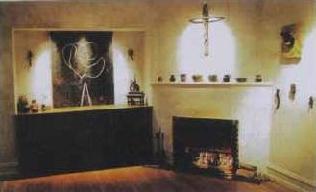
YOUR article on the Chouinard house in South Pasadena was very enjoyable [“An Art House Revival,” May 3]. Often, after a few sentences I will jump paragraphs looking for sub-stance. With your article, I settled into my chair and enjoyed the moment.
BOB O’CONNOR
Siqueiros 2010
Los Angeles Times CALENDAR
Sunday, September 12, 2010
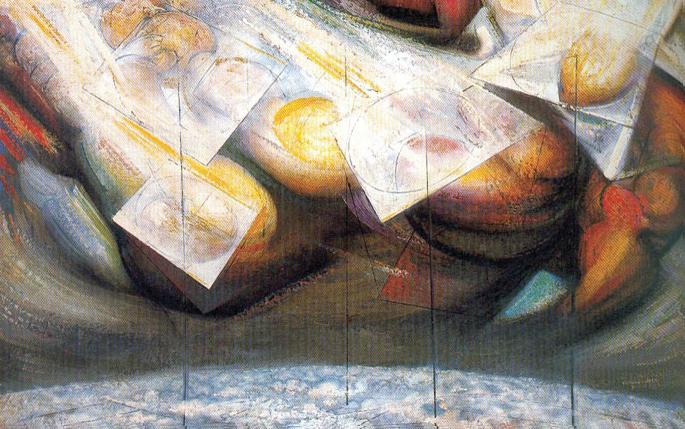
FAMED MURAL: A colorized rendering of David Alfaro Siqueiros’ “America Tropical” (1932) on Olvera Street. A viewing area is under construction.
More than an activist
Murals, landscapes and a multimedia show reveal the many sides of Siqueiros.
SUZANNE MUCHNIC
David Alfaro Siqueiros is a giant of art and political activism in Mexico, where he was born in 1896 and spent most of his 78 years. His encounter with Los Angeles was brief — about seven months in 1932 — but it still reverberates in efforts to preserve “America Tropical:’ an incendiary mural on Olvera Street that was painted over soon after he finished it, and in the work of contemporary Chicano artists.
And now, in a serendipitous convergence of events, Siqueiros is having his biggest Southern California moment in decades:
- Construction of the mural’s shelter, viewing platform and interpretive center began last week at El Pueblo de Los Angeles Historical Monument and is expected to take about two years.
- Today, “Siqueiros: Landscape Painter:’ a major exhibition that reveals a little-known but powerful aspect of the artist’s work, will open at the Museum of Latin American Art in Long Beach.
- On Sept. 24, “Siqueiros in Los Angeles: Censorship Defied:’ a multimedia show about the artist’s Southern California sojourn and its aftermath, will begin at the Autry National Center in Griffith Park.
The independently organized exhibitions will tell part of a story that has waited too long to be told, says Luis C. Garza, a Los Angeles-based photojournalist, writer and documentary producer who met Siqueiros in 1971 at a world peace conference in Budapest, Hungary, and conceived the Autry show.
“Siqueiros changed the visual landscape of Los Angeles:” Garza says. “It took 30 or 40 years for the seed he planted to germinate. Now we are celebrating it in a manner that is giving the artist his due”.
Born in Chihuahua and raised in Mexico City, Siqueiros was the youngest of Mexico’s triumvirate of leading social realist muralists, including Diego Rivera and Jose Clemente Orozco. They were all trained at the San Carlos Academy of the National School of Fine Arts, but developed individual styles partly shaped by political and social unrest in Mexico. He joined a revolutionary movement while still in his teens, beginning a long engagement with Communist and militant activities that often put him in conflict with authorities and occasionally landed him in jail.
With the help of friends, Siqueiros escaped house arrest in Taxco to come to Los Angeles, where he produced three murals, his only such works in the U.S. “América Tropical” is on a second story exterior wall of Italian Hall and eventually will be seen from an extension to an adjacent building. The mural’s central image — and source of controversy — is a Mexican Indian tied to a cross, crowned by an American eagle.
Another L.A. mural, “Street Meeting,” featuring a labor organizer addressing a crowd, has long been buried under paint and structural components of a Korean church that formerly housed Chouinard School of Art. Discussions about uncovering the mural began five years ago but no resolution has emerged. “Portrait of Mexico Today,” a commentary on Mexican political and social conditions commissioned for the home of filmmaker Dudley Murphy, was moved to the Santa Barbara Museum of Art in 2001.
Siqueiros’ exile in Los Angeles ended in November 1932 when he was denied a visa extension. He traveled on to Argentina and Spain, where he fought in the Spanish Civil War, and returned to Mexico in 1939, but not to a peaceful existence.
No exhibition can encompass all the turmoil and passion of Siqueiros’ life and art. But the Autry and MOLAA shows offer fresh perspectives on the artistic achievements and social convictions of an artist whose local presence will grow when “América Tropical” goes on view. An effort to uncover the mural began in 1969 but didn’t gather force until 1988, when the Getty Conservation Institute teamed with the city department that administers the site. The Getty Foundation has spent $3.95 million on the project and the city has contributed $5 million, but completion has been repeatedly delayed by bureaucratic entanglements, personnel changes and technical problems. The construction project announced Wednesday is expected to take about two years.
Jonathan Spaulding, executive director of the Autry’s Museum of the American West, says that “Siqueiros in Los Angeles: Censorship Defied” will introduce a story line to be continued at the downtown Los Angeles mural center. Unlike the landscape exhibition in Long Beach, the Autry show is, in Spaulding’s words, “a narrative about Los Angeles that uses Siqueiros and a generation of artists who came after him as a lens to look at the identity of the city and trace the recognition of its Latino identity, very contested in the 1930s and now celebrated. Siqueiros launched a movement not only of street art and murals in public space, but also a movement to reconceptualize the identity of Los Angeles.”
The assembly of about 100 paintings, drawings, photographs, reproductions and historical documents begins by outlining the artist’s formative years, then sets up a broad artistic and social context for his Los Angeles visit and delves into the production and official rejection of “América Tropical.” The show also explores Siqueiros’ materials and techniques and how the badly faded mural has been carefully conserved but not repainted by the Getty Conservation Institute.
In the final section, works by Los Angeles artists including Barbara Carrasco, Judy Baca and Wayne Healy indicate how Siqueiros’ legacy has continued. A video presentation of murals in Southern California is accompanied by interviews with the artists who painted them.

ARTIST WITH A COSMIC VISION: Stratospheric Antennas
shows lines projecting from volcanos to floating forms in the sky.
For museum visitors who know Siqueiros only as a hard-hitting muralist, the landscape show in Long Beach may come as a shock. But he painted landscapes throughout his career, including periods of incarceration, and they are obviously from the hand of an artist with enormous energy, deep feelings and strong convictions.
Organized by the Museo de Arte Carrillo Gil in Mexico City and curated by Itala Schmelz and Alberto Torres, the show of about 75 works — roughly half the landscapes Siqueiros painted — is teeming with emotion and drama. Trees all but explode, oceans roil and mountains rise to awesome heights. Nature can be threatening or magically wondrous, but it never sits still.
Cynthia MacMullin, MOLAA’s senior curator, who coordinated the Long Beach exhibition, describes Siqueiros as an artist with a cosmic vision. In a painting called “Atomic Aircraft,” he dreamed up a sort of organic spaceship and set it adrift on a curved wood panel. In “Stratospheric Antennas,” also painted on a curved surface, thin lines projecting from volcano peaks extend into a sky full of floating forms, possibly UFOs.
The subject matter of other works is easier to identify, but it may be presented from an aerial view or a low vantage point. In “Rocks With Figures,” viewers look up at women walking along the ridge of a volcanic rock cliff. It’s one of many works portraying people at one with nature. But others portray armies of miniature figures dwarfed by huge trees or mountains.
Still other paintings grapple with the effects of human force. “The Explosion of Hiroshima” protests the bombing of Japan that ended World War II. Abstract paintings of futuristic cities seem to praise modern ingenuity while warning against urban sprawl.
“The paintings are very sensual,” MacMullin says. “They make you feel as if you are part of the scene.” And most are packed with energy. “It’s all about cinematic movement,” she says. “Everything is in action.” But whether the action is creative or destructive — or both — is open to question.
Siqueiros did not paint from nature, as Schmelz and Torres point out in an introductory statement. “He was not a lover of nature in a botanical sense; on the contrary, his approach was that of a modern man who establishes a relationship between force and mastery.”

MAN OF MANY SIDES:
David Alfaro Siqueiros
Los Angeles Times
HOME
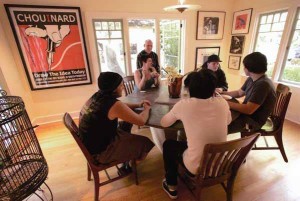
A MEETING PLACE AGAIN: David Tourjé and wife Linda gather around the dining room table of his design with their son Kyle,
right, and friends in the 1907 home, a former art salon.
An art house revival
A would-be teardown in South Pasadena is inspiration for a modern-day salon framed by its eccentric past.
WHEN Dave Tourjé bought the de- cripit 1907 farmhouse nearly 10 years ago, he didn’t have a clue it would become South Pasadena Cultural Land- mark No. 44. Rescuing the structure from certain teardown status was more about math. “It was twice the amount of money I wanted to pay and five times the amount of work I wanted to do,” he says. “But in that neighborhood, houses that were half the size were way more expensive.”
At the time, the 47-year- old construction firm owner – who for the last two decades has spent the better part of his work week as an artist, reverse- painting rebuses on acrylic panels – found it only mildly interesting that the house had belonged to Nelibertina “Nel- bert” Chouinard, founder of one of the earliest and most prestigious professional art schools in Southern California. Only when he mentioned the name to his father did he learn that his aunt had been a Choui- nard student.
After talking with that aunt, Tourjé felt the Chouinard lega- cy begin to resonate within his walls. The story it told – of the charismatic Minnesota-born painter who started her own Los Angeles art school in 1921 – suggested how the Monterey Colonial farmhouse might live on for a new generation. In its heyday, the home had served as a salon for local artists, a place where Chouinard faculty, stu- dents, graduates and their artist friends could exchange ideas and admire one another’s work. Tourjé’s goal was to restore that spirit, to re-create the essence of Chouinard’s salon but in his own way.
“The primary reason the house was nominated as a landmark in 2000 is cultural, not architectural” says Glenn Duncan, president of the South Pasadena Preservation Foun- dation. The property was sig- nificant because it played a crit- ical role in “fostering a collegial atmosphere for local artists and for students.”
LIKE a scholar, Tourjé re- searched the school, which operated near MacAr- thur Park in L.A. before it closed in 1972, three years after Chouinard’s death. He reached out to former teachers and stu- dents such as painter Ed Rus- cha, minimalist sculptor Larry Bell and Ojai potter Otto Hei- no. By 1999, a year after moving in and completing the first round of renovations, Tourjé had become a guardian of Ch- ouinard’s history, the house his chief artifact.
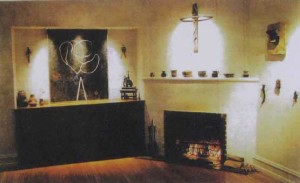
DISPLAY: A painting by the late Chouinard instructor Emerson Woelffer hangs over a Tourjé cabinet.Tourjé’s ceramics sit on the mantel
“I was surprised to learn that something so important had existed in a city that I con- ceived of having no history,” he says. “I wanted to make sure it was remembered.”
Tourjé joined forces with Robert Perine, a former student and historian of the school, to create the nonprofit Chouinard Foundation and revive interest in the institution and its illus- trious graduates, who include costume and fashion designers Edith Head and Bob Mackie, Echo Park ceramist Peter Shire, surf and rock graphic artist John Van Hamersveld, Warner Bros. cartoonist Chuck Jones and a host of Disney’s original crew of animators.
Many of these former stu- dents donated work to the foundation, which, after resur- recting the school from 2002 to 2006 in South Pasadena, now runs classes in conjunction with L.A.’s recreation depart- ment at the Exposition Park Intergenerational Community Center. The foundation also runs a program allied with the arts group KAOS Network in Leimert Park.
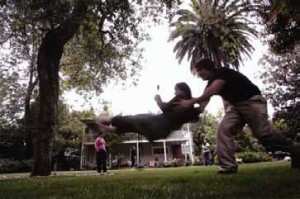
WIDE OPEN SPACES: The Tourjé’s home, originally built on 20 acres of citrus groves, evokes the spirit of a Southern country house with its second-story terrace and large front yard
These recent efforts have stayed true to Chouinard’s vi- sion, says Charles Swenson, a 1963 graduate of the school’s animation program and former creative producer on the TV cartoon “Rugrats.”
“She believed that art was for everybody and education should be affordable,” Swenson says. “She believed that art would make you a better per- son. If you studied you might not become the greatest painter in the world, but you’d be a bet- ter gas station attendant be- cause of it.” Tourjé, Swenson adds, “brought Chouinard house back to blossom as a sa- lon.
“It is not cold and austere like a historical house, but someone’s home where art and artist’s gather. It’s such an invit- ing place. The French doors of the living room open out into the front yard and the world, beckoning people to come in.”
That, however, was not how Tourjé found it. The Glassell Park native was living in Eagle Rock when he first drove by the South Pasadena house.
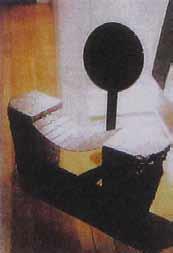
BELTS OF STEEL: A steel conveyor belt chair made by Tourjé.
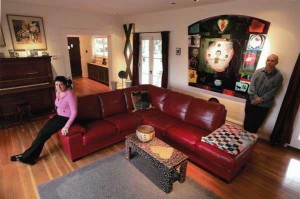
PERSONAL GALLERY: Dave and Linda Tourjé in the living room, which, like the rest of the house, is filled with Chouinard artists’ work and pieces by the Tourjé s and friends.
“It was a completely impen- etrable thicket overgrown with trees and shrubs and vines,” Tourjé says. “I actually said, ‘God help whoever buys this thing.’”
He passed the house again a few months later as the owner, a real estate broker, was leaving.
Tourjé got a better look, notic- ing a tree that was one of the biggest flowering pears he had ever seen – “so old, it must’ve been planted with the house.” He noticed a small concrete pond and fountain studded with Batchelder tiles. Inside the house, he found Douglas fir flooring, old doorknobs, cop- per hardware and other period details.“At that point,” he says, “the house really started to commu- nicate to me.”
It spoke in an architectural polyglot. The home, originally on 20 acres of citrus groves, is defined by a colonnaded side porch facing the street. A ter- race runs the length of the sec- ond story, giving the house the profile of a Southern country house. The Batchelder tiled fountain on the back patio has the decoration of the Arts and Crafts movement popular in turn-of-the-century Pasadena. A 1919 addition to the house is Spanish-influenced, with a winding staircase leading from a second-story sleeping porch to the garden below.
“The house is an eclectic mix of early 20th century styles, an organic work in progress that evolved as Nelbert Choui- nard needed it to,” preserva- tionist Duncan says. “And it is stamped with her own creativ- ity.”
In much the same way, Tourjé had to approach the res- toration of the house with all the imagination he could mus- ter. The previous owner had passed on dozens of low-ball bids on the house when Tourjé proposed leasing and fixing up the house for 18 months, with rent going towards his future purchase of the prop- erty. As the proprietor of a firm that specializes in foundation and hillside repair, however, Tourjé could do much of his own contracting work, which kept initial upgrades to around $100,000.
One thing he didn’t attempt was a structural overhaul. The 2800-square-foot house has five bedrooms and 2 ½ baths, plen- ty of space for his kids Camelia now 21; Kyle, now 17; and Ala- na, now 15. “We just settled in and dealt with the house on its own terms,” Tourjé says, add- ing that Chouinard’s additions were made with humble ma- terials and without regard for architectural conventions. “The house really has a sense of her blithe spirit. It’s like an old shoe, worn in and comfortable.”
The kitchen, which had been modernized by the pre- vious owner, needed to be gutted. Tourjé, who has made stainless-steel and concrete fur- niture since the 1980s, poured concrete countertops and used structural rebar to support a cantilevered breakfast bar, un- der which sit 1950s-style metal and rattan stools from Pier 1.
He also made a dining table topped with concrete that’s im- printed with eucalyptus from the backyard.
“Everything I took out of the house or found on the property I tried to use again,” Tourjé says. He stripped doors,replated hardware and disas- sembled the arched glass facade of a china hutch and installed it as a kitchen window over- looking the backyard. Original pantry cabinets that had long been consigned to the garage were dusted off, sanded down and repurposed. The uppers now sit as a console in the front entry hall; the lower cabinets, complete with a mahogany top, found new life as a vanity in the master bathroom.
ALL OF this work was done with few photo- graphs or resources to provide directions. “The good news was that the house hadn’t been touched,” Tourjé says, laughing.
“That was also the bad news.” To get the original color for the exterior, he had to scrape off 10 coats of paint on the sid- ing and computer-match the right shade of vintage taupe. Inside, on the assumption that the house might host art shows, Tourjé installed dozens of re- cessed lights in the freshly fin- ished ceilings. “I destroyed the entire paint job.”
It was a wise move, though, as the house soon filled with Chouinard artists’ work dis- played alongside pieces by Tourjé, his family and friends.
The smoking room, and enclosed space that was likely a porch where men enjoyed their pipes, has a bench de- signed by Tourjé and sculptor Brad Howe. Elsewhere, walls are covered with framed works, including head studies drawn by Disney animator Don Gra- ham and the iconic poster for the 1966 surf film “The Endless Summer,” designed by Choui- nard graduate Van Hamers- veld. A collection of World War II-era snapshots with hand- written captions by Tourjé’s father hand in a cluster on the upstairs landing. In the master bedroom, Otto Heino pottery sits on a Scandinavian-style dresser.
The living room’s 1985 painting by the late Chouinard instructor Emerson Woelffer hangs over a black walnut cabi- net built by Tourjé, topped with low-fire pottery from Nicara- gua and a 1930s-era Dada ma- chine sculpture. Tourjé’s high school ceramics sit on the man- tel, and the wall above it is cov- ered by totems he made from sticks, rocks, cans and wire.
“It’s about creating some kind of aesthetic harmony with things that are just laying around,” he says. “I pick up a scrap of something, find ma- terials that communicate with it and construct a piece that works.”
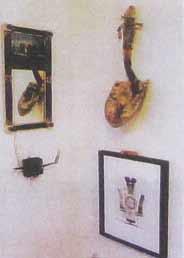
Tourjé has done just that with the house, building a home that not only preserves the memory of the school and its founder, but also creates a livable space for his family. That is perhaps the greatest dif- ference between now and then: the presence of children.
“My Aunt Nelbert wasn’t a kid person, and it wasn’t really a kid house,” says Chouinard’s great-niece, Karen Lawrence, a New York-based commercial artist. “She was pretty formi- dable, truly a diva. She used to charm all these important art- ists into teaching at the school, and she did it all with blarney because she couldn’t offer them a thing.”
South Pasadena historian Duncan says Tourjé’s restora- tion has given a future to a relic of the past.
“Nelbert Chouinard was a widow. Her children were the students of the school,” he says. “Dave’s kids are living, breath- ing contemporary teenagers who made a house that was on its last legs come alive again.”
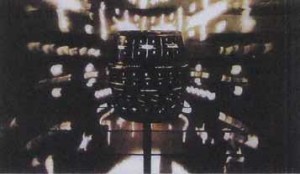
ART SCHOOL AESTHETIC: Pieces done by Tourjé decorate a living room wall, left. A lamp, center, made from a beer keg
lights the second-story porch. Decorated guitars, right, dress up a bare corner atop restored Douglas fir flooring.
The house has been ap- proved as a Mills Act property, a designation that provides tax breaks for restored landmarks. Tourjé says the family is mind- ful of their obligations living in a house devoted to art and filled with history, but they haven’t struggled with it.
“There was really no way with three kids, three dogs, two cats and a bird that we could live in a house that constrained our lifestyle,” he says. “We were able to fall into it naturally and be ourselves.”
On a recent Sunday after- noon, as the teens rummaged through the refrigerator be- fore dinner, daughter Camelia recalls those days back in ’98, when she was 12 and the family had just moved in.
“I wasn’t sure I wanted to live there,” she says. “But art is a common interest for everyone in this family, and it brought us closer together.”
She moved out this year to live closer to the school at which she teaches, but she fre- quently finds herself returning to her family home and all that it represents. “Although it’s an artistic house and landmark, we were always able to use it, to have gigantic birthday parties on the front lawn and friends stay over. It was a great place to grow up, and even more of a home because of all its memo- ries and history.”
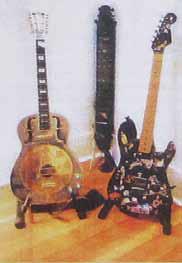
Los Angeles Times CALENDAR
LEETERS
Mayor steps up in support of the arts
THERE will always be naysayers, but the fact that we have a mayor with a stated purpose of support toward the arts is something that should be focused upon. The Chouinard School of Art was awarded the first public-private initiative, which the mayor approved, to bring our art education program to the children and teens of L.A. through the Department of Recreation and Parks. In this, the city provides all space, materials and assistance in the arts, not empty statements.
DAVE TOURJE
Los Angeles
Tourje is the executive director of the Chouinard School of Art.
Los Angeles Times CALENDAR
Chouinard to boost education in the arts
The foundation will hold classes and bring in artists to underserved public recreation centers.
By SUZANNE MUCHNIC
Times Staff Writer
Three months after closing its art school in South Pasadena, citing insufficient funds and student interest, the Chouinard Foundation has formed a partnership with the City of Los Angeles Department of Recreation and Parks to provide art education for the city’s youth. Under the terms of an agreement approved by department commissioners Thursday and expected to be endorsed by Mayor Antonio Villaraigosa, the foundation will conduct classes and bring visiting artists to public recreation centers that have offered little or no art instruction.
No new city funds will be allocated to the program, said Kevin Regan, assistant general manager of the department.
The city will provide space in existing facilities, support staff and art materials, he said. The department and the foundation will work together to obtain private funding for classes and special projects.“This will be free-form art education with drawing and painting as the base,” said David Tourje, executive director of the foundation. The highlight, he said, will be visits from accomplished artists who will share their expertise and in- sight into processes of creative expression.Regan said he conceived of the partnership after reading about the closure of the Chouinard School of Art, a modest reincarnation of a L.A. college that closed in 1972. Partially funded by Walt Disney, the original school eventually morphed into CalArts in Valencia.
Last month, the foundation ran a pilot program — organized by artist Doris Kouyias, with the help of other artists including Gilbert Lujan and Wei Lo at the Exposition Park Intergenerational Com- munity Center. The first phase of the new program is expected to begin in late fall at the center, a multipurpose facility in a former swimming stadium. Belinda Jackson, executive director of the center, is facilitating grant applications.
Regan said that plans call for expanding the model into the department’s Clean and SafeSpaces, or CLASS, program, designed to help teenagers at risk in 47 centers throughout the city.“We have dedicated teen clubs in these centers,” he said. “Why not have Chouinard come in, teach the kids art techniques, maybe have them decorate their own clubs and go from there? If we save one kid from getting involved in gangs or turning their life to drugs, and if somebody who gets turned on in this program makes a good, life-changing decision, we have done a good thing.”
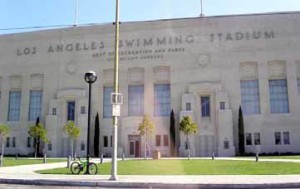
Chouinard packing its easels for good
The school, a spiritual heir to the famed L.A. art college, struggled from its 2003 start to attract students and funds
After struggling three years to keep alive a modest reincar- nation of Chouinard, a famous long-vanished L.A. art college, the artists and art patrons who established its spiritual heir in South Pasadena have decided there isn’t enough money or student interest to continue.
Barring a miracle, the Ch- ouinard School of Art will close when spring classes end Sun- day, Executive Director Dave Tourjé said.
Since 2003, the school has offered year-round instruction in a renovated, 101-year-old brick building at 1040 Mission St. but has had no accredita- tion or degree program. The staff consists of 10 part-time teachers and four office work- ers, only one of them full time.
Chouinard typically has 145 students enrolled, Tourjé said – about 100 fewer than it needed to break even.
Tourjé, an artist and con- tractor, said he and three other volunteer board members were so caught up in the day- to-day demands of running the nonprofit institution that they didn’t have time to build a broader donor base to back their vision of an art school run by artists. The school failed to generate the $360,000 a year in tuition and donations needed to meet expenses, he said, and the directors wound up floating annual deficits of $180,000 out of their own pockets.
The decision to stop came after a fundraiser raffle and art auction, scheduled for Satur- day, had to be canceled because of tepid response. A panel dis- cussion the same evening also will not take place.
“It was a pretty impossible task,” Tourjé said. “We knew what we were getting into. This kind of project can only sur- vive with massive support. We have very illustrious artists on our advisory board, but we ask them for advice, not money.”
The effort to reestablish Ch- ouinard began in 1999, when Tourjé teamed with artist Rob- ert Perine to create a founda- tion to fund and operate the school. Perine was a Chouinard Alumnus who felt dispossessed after the original debt-ridden institution closed in 1972, sub- sumed by Walt Disney in a fi- nancial bailout that eventually resulted in the creation of the California Institute of the Arts in Valencia.
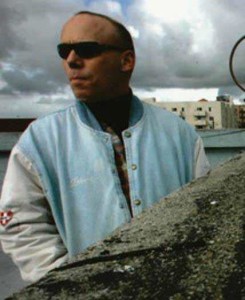
DIRECTOR: Dave Tourjé has plans for the parent foundation.
In 1985, Perine published a history of Chouinard and its demise, titled “Chouinard:
An Art Vision Betrayed.” His death at age 81 in 2004 was “a difficult blow…He was a prime mover in the whole project,” said Tourjé, who is not an alumnus of the old Chouinard but became fascinated with its history when he bought a fixer-upper in South Pasadena that had been the home of Nel- bert Chouinard, who founded the college in 1921.
Although the school will die, Tourjé said that he and the other board members planned to keep its parent Chouinard Foundation alive. They’ll take some time for planning, he said, then try to become active in grant-making, although with the school’s closing the founda- tion’s resources “will be pretty much down to zero.” A prom- ised bequest gives the founda- tion hope for the future, Tourjé said, and the hope “to find gift- ed artists and invest in them in a very focused way.”
The foundation poured $450,000 into renovating and seismically stabilizing a former grocery that was “vacant and unusable” and turning it into a school, Tourjé said. Taking donated materials and sweat equity into account, he said, the value of the makeover topped $1 million. In return, he said, the building’s owner set the rent at about half the market rate.
“We helped the progression of development on Mission Street and created a building that could be construed as a centerpiece of the West Mission Street district,” Tourjé said. At the same time, he said, “I don’t think our departure will sig- nificantly impact development there. The city has plans for de- velopment that we didn’t affect. We were an unexpected arrival, an out-of-the-blue bonus. But we did bring more profile and appeal to the area.”
Glen Duncan, who chairs South Pasadena’s Cultural Her- itage Commission, expressed sorrow at the school’s impending demise, saying he had helped bring it to the area and saw it as an asset for the city.
He agreed, however, that its loss would be unlikely to ham- per prospects for development. The school did such a terrific job of restoring the building, he said, that it should not be difficult to find a new tenant. “They’ve helped raise the devel- opment bar in the city,” he said.
Tourjé said the school’s fail- ure to thrive can’t be attributed to a single factor. “I think you can get into the larger question of apathy toward the arts.”
The instructional focus was what the executive direc- tor called “the core of the old Chouinard’s success, meaning drawing, painting and design.”
This “pure-art” philosophy may have struck some poten- tial students as old-fashioned, he acknowledged. The prevailing notion in art education, Tourjé said, is that “you go to art school, you get a degree and then you are an artist. We disagree with that completely. We don’t have any ideas about degrees making a person an artist.”
Tourjé said the foundation will relocate to its previous headquarters, in Eagle Rock.
“We don’t view this as Ch- ouinard’s end. We view it as a transition and a new beginning of some kind.”
Los Angeles Times CALENDAR
They’ve barely scratched the surface
Under layers of paint and structural work, a 1932 mural by David Alfaro Siqueiros is found. Will it ever see the light of day?
By SUZANNE MUCHNIC
Times Staff Writer
Astocky fellow with an open shirt baring his powerful chest stands on a makeshift podium, raising a fist and extending a hand as he appeals to his ragtag audience. A black man, transfixed by the soapbox orator, stands to one side cradling a child in his arms. A downtrodden white woman, also holding a child, watches from the other side. Above the speaker, dark- skinned laborers crouch on scaffolding and hang over the edge of a roof as they devour every last word of the message.
This is “Street Meeting,” a24-by-19-foot mural painted in 1932 by Mexican artist David Alfaro Siqueiros at a now- defunct art school near Ma- cArthur Park. It’s one of Los Angeles’ most important public artworks, and it vanished soon after it was created.
Some artists who assisted Siqueiros have told historians that faulty materials were to blame. Others have said that the painting was obliterated be- cause of objections to the subject matter. As time passed and memories dimmed, the school established as Chouinard School of Art and later known as Chouinard Art Institute – evolved into CalArts in Valencia. In typical L.A. style, the old building became the home of one Korean church, followed by another, and the mural was
all but forgotten.
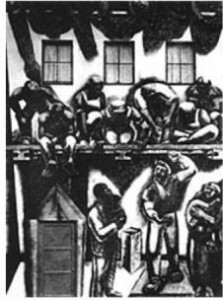
‘A GREAT FIND’: One of Los Angeles’ most important public artworks, Siqueiros’ “Street Meeting” vanished soon after it was created. Most of the mural is seen here in a photograph taken decades ago.
Until now, a small group of Siqueiros and Chouinard enthusiasts, bolstered by a team of professional paintings conservators, had discovered that the two-story work is at least partly intact. Its condition is unknown, and large areas may have been lost or damaged. But preliminary tests indicate that “Street Meeting” did not flake off or wash away, as often reported. It is buried un- der several layers of paint, on a wall that has been divided by a roof, partly tiled and roughly patched. Indented lines in the upper wall conform to contours of images in the mural. Nail holes and small excavations reveals vivid color.


“This is mind-blowing,” said Dave Tourjé, an artist, contractor and executive director of Chouinard School of Art in South Pasadena, a 2-year-old recreation of the original institution. He discovered the location of the mural last summer but didn’t go public with the news until he had discussed the situation with current own- ers of the building and engaged conservators who could verify the existence of the painting and assess its condition. The conservators completed their first round of tests Wednesday.
The project faces enormous challenges. But if “Street Meet- ing” can be saved and put back on public view, Tourjé said, it will restore “something very culturally significant” to the community.
The turning point for the artist Siqueiros painted three murals in Los Angeles during asix-month sojourn. His only outdoor paintings in the United States, they mark a turning point in his development, said Los Angeles-based art historian Shifra M. Goldman, a Latin America specialist who has written extensively about his work.
The masterpiece of the trio, “América Tropical,” stretches across the second floor of a his- toric building on Olvera Street. Painted over within a few years of its unveiling because of its political content – though not before it had faded badly – the18-by-80-foot mural is the subject of a massive conservation effort that has dragged on for nearly two decades. Another Siqueiros mural, “Portrait of Mexico Today,” an 8-by-32-footpainting commissioned for the patio of a home in Pacific Palisades, was restored to nearly pristine condition and moved to the Santa Barbara Museum of Art in 2002.
The Chouinard mural, the first of the L.A. works, is a seminal piece, Goldman said,
representing his search for an expressive style attunes to revolutionary ideals and illuminating his experiments with airbrush painting on cement.
Conservator Leslie Rainer, a veteran of the Olvera Street mural project who heads the team studying the Chouinard paint- ing, called it “a great find” for the city and the art community. “If we are able to recover it,” she said, “it will give scholars and conservators an opportunity to learn much more about Siqueiros and his mural painting technique in Los Angeles. It will also give the city one more potentially great ex- ample of his mural work.”
Siqueiros, who died in 1975, was an influential figure whose work throbs with revolutionary fervor and aesthetic muscle. Allied with Diego Rivera and José Clemente Orozco and best known for fiery murals in Mexico City, he promotedlarge-scale wall painting as a public forum for social justice. He found his political voice as an art student, helped unionize fellow artists and concentrated on Communist Party affairs from 1925 to 1930, when he was imprisoned for his political activities and confined to Tax- co, in southern Mexico.
Siqueiros traveled to Los Angeles in 1932 – perhaps at the invitation of Nelbert Murphy Chouinard, founder of the art school – and report- edly got help across the border from film director Josef von Sternberg. While in Southern California, he painted portraits and murals, gave lectures and spent a few weeks at Chouinard, teaching a class in mural painting and producing “Street Meeting.” It was unveiled July 7, 1932, to a crowd of 800.
Uncovering and preserving the mural is a long shot. The conservators must do addition- al tests to determine how much of the painting might be saved, formulate a plan and establish a budget. If the project appears to be feasible, money must be raised, and not just for art conservation. A protective structure would have to be erected over the exposed top half of the mural. A roof, probably added in the 1940s, enclosing the bot- tom half of the painting in a room now used as a kitchen, would have to be removed or cut back. To accomplish all that, the building probably would have to change hands.
But Tourjé and Moses Cho, pastor of New Times Presbyterian Church, which has owned the old Chouinard building for the past 10 years, say the mural may be the key to both men’s dreams.
Tourjé – who became in- tensely interested in Chouinard after purchasing a fixer-upperhouse in South Pasadena that turned out to be the former home of the school’s founder – approached Cho in 2001 about buying the building that houses the church before he suspected the mural was there. Cho and the church’s elders wanted to find a larger space, but they weren’t ready to sell and the Chouinard group secured a building in South Pasadena.
The mural has raised the issue again, with new urgency, and the climate seems to have changed. Tourjé and Cho are talking about relocating the church and hope to devise a mutually agreeable plan that would let the Chouinard group take back the school’s former home and restore the mural.
“Art belongs to the community,” said Cho, who was born in Korea, educated in Philadelphia and moved to Los Angeles 16 years ago. “I love this city, but this area does not have special art and we want to help. I hope the mural will be restored. It would be good for the com- munity.”
The revelation that the mural lives – in some form – was sparked last June by research on another project. Luis Garza, and independent curator who is organizing a Siqueiros exhibition expected to open in September in Los Angeles’ Municipal Art Gallery, phoned leaders of the new Chouinard in South Pasadena. Hoping to find information on “Street Meeting,” he and associate Jose Luis Sedano set up a meeting with artist Robert Perine, who graduated from Chouinard in 1950 and spearheaded the school’s revival with Tourjé. Perine died in November.
“We had started some archeological digs on the mural,” Garza said. “We knew the names of artists who had helped Siqueiros with the Chouinard mural, and we hoped to find visuals and background material.”
At the meeting, Garza, Sedano, Perine and Tourjé looked at photographs of the mural and speculated about where it might have been painted. Perine suggested a wall adjoining the actual site. Then No buyuki Hadeishi strolled in. a former Chouinard student and teacher who serves on the new school’s board of directors, Hadeishi hadn’t previously seen the pictures, when he took a look, he immediately pegged the location of the mural.
“I was very familiar with that area because I taught print- making next door to it,” Hadeishi said, “and I set up a photography dark room in the space behind the windows in the mural. The reason Bob Perine and others who had seen pictures didn’t realize where the mural was is that a roof had been built over the first floor. You can’t see the whole wall.” Floor plans of the building, published in a 1985 book by Perine, proved
that Hadeishi was right. A door on the first floor and three windows on the second floor cor-respond to those in the mural.
Brimming with curiosity, Tourjé headed off to the church early the next morning. Above a door in the church’s kitchen, he found a nail hole that ex- posed several layers of paint, including a bit of bright color.
“Then I went up on the rood to see the top of the wall,” Tourjé recalled. “It was breathtaking to look down and see incised lines that correspond to the design of the mural. You wouldn’t no- tice them if you weren’t looking for them, but once you know, there’s no question.”
After a long talk with Cho, Tourjé relayed the news to the curators and his Chouinard colleagues. Pooling resources, the Chouinard group came up with a few thousand dollars and established the Chouinard/ Siqueiros Mural Conservation Fund. Then Tourjé consulted with paintings conservator Carolyn Tallent, who referred him to Rainer, a mural specialist. She enlisted colleagues Chris Stavroudis and Aneta Zebala, and they scheduled the first of several visits.
In the meantime, Tourjé found a loose section in a patch on the exterior mural wall. He covered the rupture with protective tape, but a chunk of plaster came off, revealing bright red paint and shapes that precisely match the shoulder of a laborer in the mural.
That ragged spot remains the most “tantalizing” indication of buried treasure, Stavroudis said. But the conservators have removed paint in several tiny sections, called “re- veals,” offering hopes of more to come. Bright blue tape covers their tests on the exterior; reveals in the kitchen dot a wall largely obscured by massive refrigerators.
“We are cautiously optimistic,” said Rainer, whose team will prepare a report of their findings and make recommendations. “We do feel that something is there. We can see traces of the design through paint and plaster layers. We can see incisions that march the historic images. And we do see color, but some of it may have been scraped before the wall was repainted. We also see big patches of plaster on that upper exterior wall, and we have heard that large pieces of plaster fell off in an earthquake in the 1990s. But we can’t know how much has sheeted off or what condition the mural is in until the whole thing is uncovered.”
The wall has four zones that would require different treatments, Rainer said. Exterior paint would be removed me- chanically, but scraping. Each of the three interior sections an attic above the drop ceiling, the upper painted wall and the lower tiled segment – probably would call for a specific application of solvents. Devising these systems would be part of the challenge, she said.
But no campaign will be launched for a while – if at all. “When we produce our report, we will advocate for not doing anything more until the build- ing is secured and there is an owner who has a long-term preservation plan for the mural,” Rainer said. “The next step would be to do larger tests in every area and find the best, most efficient way to remove the paint. But we want to do the project in a comprehensive way. We don’t want to do any more testing on the exterior until it is protected by some sort of covering, and we don’t want to work on any one area without knowing about the other areas.” The perpetually troubled conservation of “América Tropical” casts doubt on any attempt to restore “Street Meeting.” Goldman tried to stir up interest in preserving the Olvera Street mural in 1969, but work didn’t begin in earnest until 1987, when the Getty Conservation Institute joined forces with El Pueblo de Los Angeles Historical Monument, the city department that administers the site. Progress has been fitful and the Getty has threatened to withdraw the balance of its$2.6-million commitment if the city fails to raise the estimated $1.4 million needed to complete the work. The Getty’s deadline is July 1. If all goes well, the project will be finished at the end of 2006.
Despite the specter of fundraising, Tourjé said that private ownership may be an advantage for the Chouinard project. Undaunted, he and his colleagues envision acquiring the old building as part of a complex that would include the school in South Pasadena and serve as a beacon of Southern California’s artistic legacy.
“It’s our idea of urban cultural development,” he said. “The mural could potentially become an icon, as an identity factor for the larger surrounding community – both His- panic and Asian, due to Pastor Cho’s contribution to the idea and the larger L.A. art community.”
Chouinard school to host conversations with artists
The fledgling Chouinard Foundation School of Art in South Pasadena will launch a visiting artists series this weekend with appearances by Larry Bell and Ed Bereal. The program will be the first public event at the school, under con- struction in a historic two-sto- ry building at 1020 Mission St.
Bell and Bereal – alumni of the school’s predecessor, Ch- ouinard Art Institute, which closed in central Los Angeles in 1972 and evolved into CalArts in Valencia – will conduct what they describe as a freewheeling conversation about creativity and artistic integrity tonight at 8. They will teach a master class Sunday from 2 to 4:30 p.m.
The weekend program is part of a five-year effort to re- create Chouinard that began when artist and contractor Dave Tourjé bought a fixer- upper in South Pasadena and discovered that it had been the home of the original school’s founder, Nelbert Chouinard.
Tourjé had no connection to the school but became fas- cinated with it and obtained the support of painter Robert Perine, a Chouinard alumnus who chronicled the school’s history in a 1985 book. They es- tablished the Chouinard Foun- dation in 1999, then organized an alumni exhibition, held a benefit art auction and leased the Mission Street building.
Renovation of the 16,000-square-foot structure is about two-thirds complete, Tourjé says. Meanwhile, the school’s first 63 students are taking classes in drawing, de- sign and color theory at the un- finished facility.
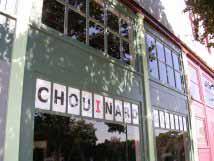
Tickets to the artists’ con- versations, “Bell and Bereal in Dialog,” cost $10. Tuition for the master class is $50. In- formation: (323) 982-1773 or info@chouinardfoundation. org.
Defunct L.A. art school on a quest for resurrection
A group of artists is raising money in hopes of reviving Chouinard Art Institute, which closed its doors in 1972.
There’s no point in starting another art school – unless it’s education- ally unique, it’s run by practic- ing artists, it’s based on student needs, it re-focuses on fun- damentals, it has community support, it has solid financial backing and it has a meaning- ful name.”
That’s the message on the cover of Grand View, the Quar- terly bulletin of the Chouinard Foundation, a nonprofit orga- nization in South Pasadena. It’s also the rallying cry of a group of artists who hope to create a new version of a long-gone, much-mourned Los Angeles art school, Chouinard Art Institute.
The school, founded in 1921 by artist and teacher Nelbert Murphy Chouinard, closed its doors on Grand View Street in 1972 and, with the help of Disney money, evolved into CalArts in Valencia. But Ch- ouinard has a lively presence in L.A. art history because dozens of prominent artists worked or studied there. Remembered as a freewheeling environment that taught the basics and fos- tered creativity rather than pro- moting a particular style, the school inspired fierce loyalty.
Supporters of the Choui- nard revival, who have already leased a building in South Pasa- dena’s Mission Street corridor, are gearing up for their first major fund-raiser. It’s an auc- tion of artworks donated by former Chouinard students and teachers, to be held at 7.15 at the I.M. Chiat Gallery in Beverly Hills. Works to be auctioned will go on view Monday in a preview exhibition that will run through March 15.
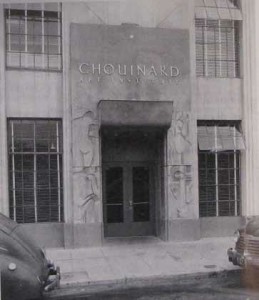
MULTIPURPOSE: The Chouinard Art Institute, shown here in 1949, trained everyone from painters to cartoon animators.
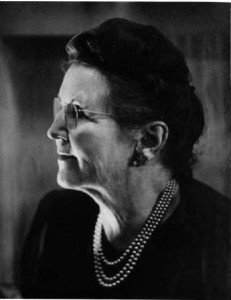
FOUNDING MOTHER:
Nelbert Murphy Chouinard.
The exhibition and sale will celebrate the talents of a wide range of artists who were in- volved with Chouinard, says artist and contractor Dave Tourjé, who established the Chouinard Foundation in 1999 with Robert Perine, an artist and author of “Choui nard: A Vision Betrayed,” a 1985 book that chronicles the school’s history and bemoans the merger with Disney money and CalArts.
They hope the auction will raise $500,000 toward a goal of $2 million to renovate the building and establish the school. So far, the foundation has received more than $100,000 in cash, in addition to donated artworks, Tourjé says.
The auction will offer works by about 100 artists, including the late Emerson Woelffer, an abstract painter who taught at Chouinard from 1959 to 1970; Frederick Hammersley, a noted painter of hard-edge abstractions who was on the faculty from 1964 to 1968; and Ed Rus- cha, the quintessential L.A. art- ist who studied at Chouinard from 1958 to 1962. Among other works that will go on the block are a painting by Disney animator Marc Davis, draw- ings by Playboy cartoonist John Dempsey and works by Guy Dill, Larry Bell, Joe Goode, Phil Dike and Millard Sheets. There are also works by artists with no direct Chouinard experience: Gajin Fujita, in his 30s and a product of Otis College of Art and Design and the University of Nevada, Las Vegas, is repre- sented with a work.
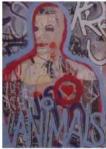
The foundation is also sell- ing a commemorative print, featuring the image of Nelbert Chouinard’s circa 1915 painting “Eucalypti.” The hand-printed serigraph, published by Cirrus Editions as a limited edition of 375, is priced at $1,000.
The movement to re-create Chouinard began is 1998, when Tourjé bought a fixer-upper in South Pasadena and discovered it had been the home of Nelbert Chouinard. Although he had no connection to the school, he did some research, read Perine’s book and looked up the author. They started talking about the possibility of reviving the vi- sion of the school’s founder, set up the foundation and began to use the house for reunions, seminars and small exhibitions.
The foundation made its first public splash in 2001 with a three-part exhibition of art- works by Chouinard affiliates at the Oceanside Museum of Art, Palomar College’s Boehm Gallery in San Marco and Mira Costa College’s Kruglak Gal- lery in Oceanside. That event dusted off the school’s history, but the auction is intended to bring it back to life.
Whether Chouinard can be revived remains to be seen. Some of the artists who have donated works to the auction privately question whether Southern California needs an- other art school, in addition to Otis College, Arts Center Col- lege of Design, CalArts and a host of university art departments.
But the new school would be different, its advocates say.The idea is to offer “a con- centrated, professional, fun- damentals-loaded approach taught by experienced artists using actual problems they have confronted,” says painter Walter Gabrielson. “That’s what Chouinard was about. They didn’t teach dogma. Now art schools have reversed that; they teach dogma and hardly any fundamentals.”
CALENDAR
LETTERS
Chouinard and CalArts
ERRORS in Don Mann’s Aug. 5 letter should be cor- rected to reflect actual events occurring during the cre- ation of CalArts and its absorption of the Chouinard Art Institute and the Los Angeles Music Conservatory. Mann attributes a large part of the responsibility for these events to Bob Haldeman, who resigned from the board in 1970 and had nothing to do with events Mann describes, which occurred in 1972. Similarly, he incorrectly refers to Harrison Price as an accountant and owner of the accounting firm Price Waterhouse. Mr. Price is, however, a trustee of CalArts, which he has generously served for 40 years. Edward Reep and Bill Moore were never board members.
The merging of CalArts and Chouinard was indeed painful. Walt Disney was gone, and the board of trust- ees had installed a new administration under the presidency of Robert Corrigan. This new administra- tion absorbed some faculty and some programs from Chouinard and the conservatory, but many programs were modified or abandoned in favor of the new direc- tions. The board delegated the business of defining the new academic structure to the administration, which had been brought in to do that job. At times, several trustees took issue with some of these choices.
Nevertheless, CalArts was positively influenced by merging with its two antecedent schools. The bottom line is that mergers are not easy. In this case, however, the quality of the result honors both Chouinard and the conservatory.
STEVEN D. LAVINE
President, California Institute of the Arts
Valencia
MANN indicates that the “New York academics” Cathleen Cross Ohanesian was referring to in her prior letter were H.R. Haldeman and Harrison Price. She was in fact referring to Robert Corrigan and provost Herbert Blau, who resigned in the wake of the chaos surrounding the Chouinard/CalArts transition.
The existing relationship between Chouinard and Cal- Arts is clearly a complex one.
Since buying Nelbert Chouinard’s home and co-found- ing the Chouinard Foundation with Robert Perine, I see that the passion this discussion inspires has at its roots the loss of an important art-education system, one that amply succeeded before its awkward end.
To completely blame Corrigan and Blau for the demise of Chouinard would be shortsighted. The ultimate re- sponsibility lay in the hands of Nelbert Chouinard and Walt Disney themselves: hers for allowing the financial condition of her school to deteriorate to the point of needing Disney and his for not preparing an orderly transition of Chouinard affairs in the event of his sud- den and untimely death, which unfortunately occurred. The “what if” theories will likely continue, but what we have is “what is”–a rich yet nearly forgotten legacy that if explored could only serve to strengthen the founda- tion upon which rests the ongoing process of art-mak- ing in Los Angeles and beyond.
DAVE TOURJE
Chouinard Foundation
South Pasadena
Los Angeles Times
CALENDAR
LETTERS
RE the July 8 letter from Cathleen Cross Ohanesian, daughter of the celebrated painter and teacher Watson Cross, in re- sponse to the article about Chouinard Art Institute (“True to a Significant School,” by Suzanne Muchnic, July 1): While I did not attend CalArts during the period her father taught there, my good friend Edward Reep was the chairman of the painting department and one of Cross’ mentors. We were both surprised and saddened to read her bitter and grossly inaccurate inter- pretation of Walt Disney’s ideals for CalArts.
Chouinard was indeed to be dissolved into the new campus of CalArts, which was to be made up of five separate schools of art, under the direction of a board, with Mr. Disney, Mr. Reep, Bill Moore, Millard Sheets and Robert Corrigan, a doctorate in dance, among others. They were thrilled to be a part of an exciting new school infused with a great deal of new capital. The only thing we can possibly fault Mr. Disney for is contract- ing cancer in 1966 and subsequently dying from the disease in December of that year.
The “New York academics” Ohanesian refers to were none oth- er than H.R. Haldeman, who left CalArts to go do some kind of work in Washington with the Nixon administration, and his re- placement, Harrison Price, the accountant and owner of Price Waterhouse who caused the mass attrition in 1969. To blame Walt Disney for the demise of Chouinard in 1972 is blatantly unfair.
For anyone really interested, there is a book titled “Chouinard, an Art Vision Betrayed” by Robert Perine.
DON MANN
Van Nuys
Los Angeles Times
CALENDAR
LETTERS
Disney and Chouinard
IWAS gratified to read Suzanne Muchnic’s story about Ch- ouinard Art Institute (“True to a Significant School,” July 1). The impact this school had on the art world in this country cannot be overestimated.
My father, Watson Cross, graduated from Chouinard, and for 29 years was one of the life drawing and anatomy instructors. Many of the painters, sculptors, fashion designers and anima- tors who passed through Chouinard were in his classroom near the start of their careers. He was proud of them all and proud of the “creative training ground” that was Chouinard.
Most of the teachers and students were at first exhilarated at Walt Disney’s interest and patronage of Chouinard. Unfor- tunately, as Disney became the school’s benefactor, he also became its destroyer. His idea of a university of the arts was a good one–the fact that CalArts has survived attests to that. Clearly, Chouinard and most of its faculty did not fit his tidy, Disneyland Main Street, U.S.A. vision of a factory far removed from the gritty city, churning out talent to feed his empire. The New York academics Disney brought in to head CalArts dis- carded a dedicated, proven faculty and killed the spirit that was Chouinard.
We will never know what the future might have held for Ch- ouinard if Disney had infused it with money but allowed it to remain its free-spirited, experimental self. Its demise in 1972 left a void in Los Angeles’art education as yet unfilled.
CATHLEEN CROSS OHANESIAN
South San Gabriel
Los Angeles Times
CALENDAR
TRUE TO A
SIGNIFICANT
SCHOOL
Faculty and alumni have joined a show on freewheeling Chouinard’s place in Los Angeles art history.
Chouinard Art Institute closed its doors 29 years ago, but it refuses to die. Even if the building on Grand View Street, just west of downtown Los Angeles, is now the home of the Korean American New Times Church and the school has long since evolved into CalArts, way out in Valencia, fond memories of the long defunct school pop up in nearly every panel discussion, symposium, lecture and article on L.A.’s art history.
Still, there has never been a Chouinard love fest like the exhibition of works by 137 former members of the school’s faculty and student body scheduled to open Saturday and run through Aug. 26. Presented by the Chouinard Foundation a nonprofit group dedicated to preserving and expanding the legacy of the school’s founder, Nelbert Chouinard and sponsored by the Oceanside Museum of Art, “Chouinard: A Living Legacy” is a three part show. “The Early Years: 1921- 1945” will be at Palomar Col- lege’s Boehm Gallery in San Marcos; “The Middle Years: 1946-1955,” at Mira Costa College’s Kruglak Gallery in Oceanside; “The Last Years: 1956-1972,” at the Oceanside Museum of Art.
Chouinard’s staying power is largely due to the stellar ros- ter of artists affiliated with the school during its 51 years of operation, from 1921 to 1972, and its role in shaping South- ern California Modernism in all its eclectic manifestations.
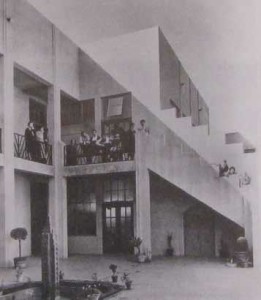
In 1936, students congregate on the patio.
Rather than being identified with a particular style, the school is remembered as a freewheeling environment that fostered creativity while training everyone from painters and sculptors to animators and fashion designers. It also inspired fierce loyalty, evidenced by the large number of Chouinard students who returned to teach there.
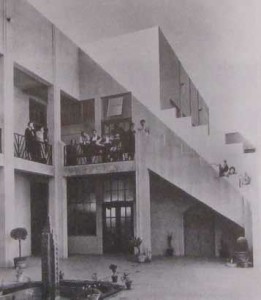
Teacher Marc Davis’ “Woman in Chair.”
Painters John Altoon, Lorser Feitelson, Frederick Hammersley, Matsumi Kanemitsu, Millard Sheets and Emerson Woelffer were among the faculty’s leading lights, as were ar-chitects Richard Neutra and Rudolf Schindler, Disney animator Marc Davis, costume designer Edith Head and critic Jules Langsner. In addition to those who had lengthy gigs at Chouinard, Russian born sculptor Alexander Archipen ko, French painter Jean Char- lot, Mexican muralist David Alfaro Siqueiros and other international art stars passed through as visiting professors.

On display is “silent II” (1971) by Matsumi Kanemitsu, a Chouinard teacher.

For many alumni, Ch- ouinard (pronounced Shuh- NARD) was exactly the right place at the right time. Take artist Edward Ruscha, L.A.’s quintessential artist. He headed west in 1956, fresh out of high school in Oklahoma City and full of plans to become a sign Pasadena). He was crushed to discover that the school of his dreams had no room for him, but it turned out to be a good thing. “Art Center had a dress code no facial hair, no sandals, no affectations of beatnik culture,” Ruscha said, rolling his eyes. After asking around, he landed at the relatively casual Chouinard, which suited him much better.
Robert Perine, a painter and graphic designer who lives in Encinitas, Calif., was sloging through required courses at USC on the GI Bill in the late 1940s when he decided to transfer to Chouinard. “I was in heaven,” he said. “Every day I could draw and paint.” In 1978, 28 years after his graduation, Perine was still so infatuated with the school and so distressed by its transformation into CalArts, with the help of Disney money that he began conducting interviews and compiling information for a book, “Chouinard: An Art Vision Betrayed,” his chatty, opinionated but ambitiously researched account of the school’s history, was published in 1985.
The exhibition is intended to “put Chouinard in its proper context as the vital Los Angeles art institution it was” and to give “full credit to Nelbert Chouinard, a woman who was ahead of her time,” said Perine, who curated “Chouinard: A Living Legacy” with artists James Aitchison and Ed Flynn. It’s the first public project of the 2-year-old Chouinard Founda- tion, and the organizers hope it will inspire other curators to delve into the school’s history.
As for the founder, Nel- bert Murphy Chouinard was born in 1879 in Montevideo, Minn., and studied art at Pratt Institute in New York. She moved to California is 1909 to teach design and crafts at the Throop Polytechnic In- stitute (now Caltech). In 1916, she married Horace “Bert” Chouinard, an old friend from Minnesota who was serving as a U.S. Army chaplain, and they moved to Washington, D.C. He died of cancer a year later and Nelbert returned to California.
She taught art history at Otis Art Institute for a couple of years and opened her own school in 1921. With $250 in cash, a World War I widow’s pension of $75 a month and two other teachers, F. Tolles Chamberlin and Patti Patterson, she established Chouinard School of Art in a two-story house at 2606 W. 8th St. It was a modest operation that embodied the vision of a woman remembered for upholding high standards while treating her students like members of her family and insisting that “talent is more valuable than tuition.”
Firm but nurturing, she was a formidable character with two faults, Perine said. “Focusing on art, she paid too little attention to finances and, where students were concerned, was generous to a fault. While awarding too many scholarships, she was failing to keep an eye on book keepers,” he said, noting that two of them embezzled funds and put the school in debt on two occasions.
Money was always a prob- lem at Chouinard, but Walt Disney discovered the school in 1929 and began sending his employees there to perfect their drawing skills. The following year, the school was flush enough to move into a new building on Grand View Street designed by the architectural firm Morgan, Walls and Clements. In 1935, the school was reincorporated as Chouinard Art Institute.
The building was financed by an investment company and leased to the school. It was an affordable arrangement at the time, but World War II decimated enrollment and the school was forced to move into a less expensive facility nearby. After the war, the GI Bill reversed Chouinard’s fortunes. Overflowing with veterans who were financed by government funds for education, the school moved back to Grand View and bought the building in 1949.
Artist Ned Jocoby remem- bered Chouinard in the 1940s as “a place that had an almost magical sense of common spirit. There was virtually no disci- pline but everything you needed to learn was there to have if you wanted it. And we wanted it. Often we learned as much from the others in the class as from our teachers who often seemed to be just trying to channel the energy, then standing back to let it happen.”
Painter Walter Gabrielson, who studied at Chouinard in the 1950s, likened the school to “a boiling caldron…where every day teachers and fellow stu- dents were radically reassem bling your head.” Along with one teacher’s “Critiques from hell” and another’s “convoluted problems,” Gabrielson recounted the day when instructor Robert Chuey steamed into the painting classroom, “threw down a load of branches, twigs, beer cans and other junk and yelled, ‘OK, suckers, see if you can paint that.’”
Chouinard was plagued by financial problems in the 1950s. Disney, who became more involved with the school after receiving an honorary degree from it in 1956, dispatched his accountants to sort out the mess and wrote a check to cover the deficit. His interest in the school grew as Nelbert Chouinard aged and relinquished control. He would ultimately choose a board of directors and architects for a new, multidisciplinary university of the arts that incorporated Chouinard and the Los Angeles Conservatory of Music.
Inevitably, tensions devel- oped as Disney’s vision made it clear that the old faculty would be left behind in a school that would cease to exist. Choui- nard devotees hoped that the new institution would at least bear the name of its predeces- sor, but it became California Institute of the Arts, or CalArts, while Chouinard drifted into history.
Nelbert Chouinard, who retired in the early 1960s but maintained a presence at the school for several years, died in 1969. CalArts opened at its Va- lencia site late in 1971. The last graduation at the Chouinard building took place on April 16, 1972.
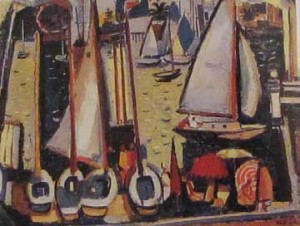
”Balboa Scene” (circa 1947) by Phil Dike, who taught at the Institute from 1931 to 1951.
Chouinard and its found- ers might have received their final tribute in Perine’s book were it not for a real estate deal in South Pasadena. Dave Tourjé, an artist and contractor, was looking for a home for his family when he came across a rundown, two story house on Garfield Avenue. He kept going back to look at it and finally bought it in the summer of 1998.
While looking over the deed of his fixer upper, Tourjé discovered that he had purchased the home of Nelbert Chouinard. He knew little about the school she had founded and nothing at all about the woman who had lived in the house for many years, but he decided to restore it as close to its original state as possible. While doing research, he found Perine’s book and tracked down the author.
As the two artists tell the story, they hit it off and got excited about reviving Chouinard’s vision. They established the Chouinard Foundation and began to develop plans for granting scholarships to art students and using the house for meetings, reunions, seminars and small exhibitions.
Before long, a group ofalumni was gathering there on Saturday mornings to reminisce and make plans. A newsletter, Grand View, which solicits and prints alumni recollections, drawings and news was launched.
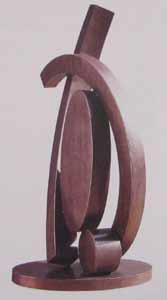
”Lan” by former student GuyDill.
The upcoming exhibition began with talk about presenting works by Chouinard faculty and alumni at the house,but it soon became too big for the space. As more and more artists agreed to lend pieces including Chouinardera and recent works Perine secured gallery space at the Oceanside Museum, where he serves on an administrative committee.That wasn’t big enough either, so he and his colleagues divided the show into three parts and found additional space at the two nearby colleges. Perine cu- rated “The Early Years,” Aitchison organized “The Middle Years” and Flynn rounded up artwork for “The Last Years.”
Now that the show is coming together, the curators are dealing with the usual catalog glitches and delivery problems, but the effort has paid off, Perine said. Just as no one turned down his requests for information when he was compiling his book, the artists have come through with work for the show, he said.
“Chouinard was a school that allowed everything,” Perine said. “It was very free and open. You were encouraged to find where you wanted to go.” The exhibition will reflect that approach in a wide variety of works selected to represent the artists well and when possible compare pieces created during their Chouinard days with later works.
Visitors will see the “diversity of style” that grew out of Chouinard, but they also will see “continuity of quality,” Perine said. Still, the main point of the exhibition and its accompanying catalog is to remind the public of the school’s importance as a creative training ground, he said. “We hope people will see that Chouinard made a contribution to the art of Southern California and beyond.”
“Chouinard: A Living Lega- cy” Saturday through Aug. 26. Boehm Gallery, Palomar College, 1140 W. Mission Blvd., San Marcos, (760) 744-1150, Ext. 2304. Kruglak Gallery, Mira Costa College, 1 Barnard Drive, Oceanside, (760) 795-6657. Both galleries are open Tues- days-Wednesdays, 10 a.m.-4 p.m.; Thursdays, 10 a.m.-7 p.m. Admission is free. Oceanside Museum of Art, 704 Pier View Way, Oceanside, (760) 721- 2787. Tuesdays Saturdays, 10 a.m.-4 p.m.; Sundays, 1-4 p.m. Admission is $5; seniors and students, $3.
LAObserved
Los Angeles media and sense of place
Second Siqueiros mural found
Suddenly Los Angeles is awash in lost murals by Mexi- can revolutionary artist David Alfaro Siqueiros. In 1932, the comrade of Diego Rivera and Frida Kahlo came to L.A. to teach a class at the Chouinard Art Institute, the famed private art school that folded into CalArts in the 1970s. While here, Siqueiros painted controversial politi- cal murals on a wall at the school near MacArthur Park and another at Olvera Street. Both were covered over in the antiCommunist fervor of the 1930s. The Olvera Street work, La América Tropical, has been uncovered and is undergoing restoration by the Getty Conservation Institute. The mural painted at Chouinard, “Street Meeting,” had been believed lost.
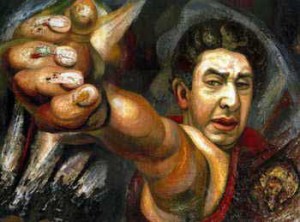
A story by Suzanne Muchnic in Sunday’s Times (subscribers only) details how some history detectives think they have found the mural, obscured but still intact, on a wall at the old Chouinard campus at 743 S. Grand View Avenue. The former campus, a city historic cultural monument designed by under appreciated L.A. architect Stiles O. Clements, is now a Korean church. The church is cooperating with plans to raise money to further investigate and possibly restore the work. The image above is a later self portrait by Siqueiros.
Chouinard’s influence in the arts in Los Angeles was substantial. It along with the Otis Art Institute formed a thriving arts district around Westlake Park (now MacArthur Park) from the 1930s into the ‘60s. The Chouinard name disappeared in 1972, but artist David Tourjé became intrigued after he bought a South Pasadena home that had belonged to the founder. In 1998, he and a partner started the Chouinard Foundation with an advisory board of former students and faculty. There’s now an art school going and it’s Tourjé who is spearheading investigation of the Siqueiros mural. (Robert Perine, the other partner, died recently.)
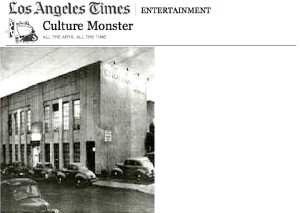
When Pratt Art School graduate Nelbert Chouinard moved to California in 1919, a great future awaited her. She began teaching art almost immediately and by 1921, had opened her own school. In less than a decade the Chouinard Art School was listed among the top five art schools in the nation, a position it occupied for the rest of its history. Her faculty consisted of professional artists; students were hand-selected talents, many from local high schools. Her formula was simple: students worked hard at the basics of drawing, design, and painting, and then were encouraged to follow their own learnings. By WWII the school’s reputation had spread and applicants arrived from aroundtheworld. This success continued through the 50’s and 60’s, Chouinard always playing a large role in the development of various forms of Modernism, from Hard Edge to West Coast Pop, Light and Space to Surf and Rock culture. By 1972, Chouinard’s fifty year run had come to a close.
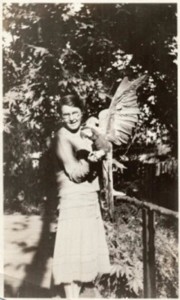
The ensuing thirty years formed something of a distillation period, this process leaving “Chouinard” a purified ideal one that is alive in the many that experienced it and something that reaches beyond even Nelbert Chouinard herself. Part methodology, part lore and memory,“Chouinard,” as it has now become through rediscovery, is clarified and alive, its basic purpose revitalized.
The Chouinard Foundation is a receptacle for this purpose, defining Chouinard’s influential role in the past but, more importantly, being there for future artists wanting to contribute in a meaningful way to the future of art making.
We would like to express our sincere thanks to the artists, dealers and collectors who have generously donated in order to see this idea become a reality.
Robert Perine
Dave Tourjé
Los Angeles, March 2003
DRAWING AND THE ART SCHOOL
The Chouinard Art Institute was composed of a cluster of related and overlapping disciplines that included fine arts, design, film, illustration, advertising, fashion, and ceramics. It was the conviction of the faculty that a strong general education was required for every student. That education would include history, government, literature, science, psychology, semantics, and two years of art history.
Drawing and painting from the Fine Arts division were the foundation of the curriculum of every division. Since the artist would live in a competitive environment, producing work for current use, one had to be keenly aware of contemporary taste, new technologies, and shifting styles. One needed to be able to understand the user of art and the pressures motivating decisions. An artist was trained to be a thinking person, with sensitivity to his/her audience, means, past, and his/ her interpreters.
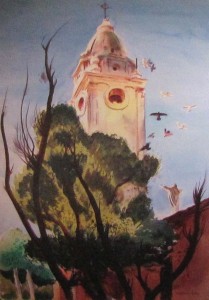
Untitled watercolor by Millard Sheets, 1938, 30”x22”
Drawing is unquestionably the oldest of the arts. Humans depicted their quarry long before fashioning the first mother goddess figure or creating the first clay cup. We know from cave paintings, Egyptian hieroglyphs, and Greek vase decoration that substantial skills developed in describing the observed world,
setting out brilliant likenesses, recording both interior and exterior life.
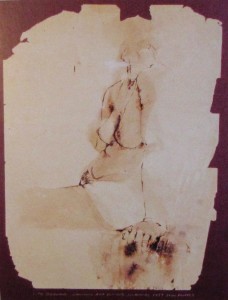
Untitled nude by Llyn Foulkes, 1957, 30”x23”
At the beginning of the 15th century in his Libro delleArts Cennino Cennini was the first to formally advocate the serious study of drawing as the basis of all artistic training. Drawing was conceived at that time as an intellectual discipline. By the end of the 15th century Leonardo da Vinci demonstrated the importance of drawing as a means of scientific discovery in both his writings and his drawings.
Under Leonardo, Michelangelo and Raphael developed drawing into more elaborate and significant functions for the artist. It became a tool for exploring and developing ideas and an expression of ability and virtuosity. First thoughts were jotted down and developed into specific studies of compositional elements figures, heads, draperies and then synthesized into total compositions, workedup for presentation to a client, Pope, or King. The academic workup can be compared to the architects approach, with tentative sketches of functions, structures, and facades, then integrated into a model of a future building.
The Chouinard Art Institute curriculum recognized, as did J.A.D.Ingres, that “…drawing is the probity of art.” The twentieth century has seen a progressive dilution of classical art techniques and drawing skills, with the evolution of new technologies photography, copying machines, and computer design. Classical contour drawing, calligraphic skills, and tonal composition are often substituted, manipulated and avoided through mechanical devices and computer software. For many in the late twentieth century and today, drawing is avoided by contemporary devices. If, however, drawing is an intellectual discipline, the basis of all artistic training, a means of scientific discovery and a tool for developing and exploring ideas, that avoidance carries a heavy cost. The price can be a loss of independence, the freedom to ex ress the uniqueness of personal vision.
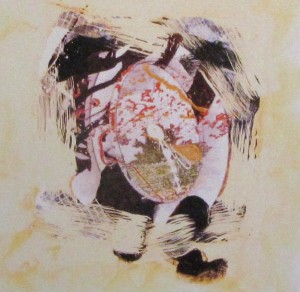
DMXX Nucleus by Larry Bell, 2001, 42”x42”
The Chouinard Art Institute was a faculty governed art laboratory. Decisions were arrived at through the consensus of the teaching staff. Those decisions were tempered by daily experience in the making of art in the contemporary world. Every faculty member was first a practicing artist and only secondarily an art instructor. Daily experience in the real world studio, with its pressures and changing technologies, guided each staff member in helping develop curriculum, in considering theadding of new classes ordropping and guiding students, evaluating the timing for their advancement into a major upper division field.
Because the faculty recognized that the pace of 20th century life and modern art had brought about a relaxation of standards which affected the work and sensibilities of entering students, it decided to adopt new teaching and scheduling strategies. First, a saturation/teaching process in eightweek packages was developed where thestudentwouldimmersehim/herselfinaspecificartlaboratory,unlike anything one experienced in previous schooling. Second, drawing was mandated as an unavoidable discipline, and every fulltime student was required to devote one studio day each week in drawing relating to his/ her primary career goals.
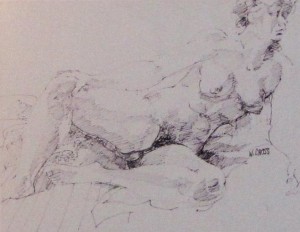
Untitled nude by Watson Cross, 1994, 10 1/4”x131/4”
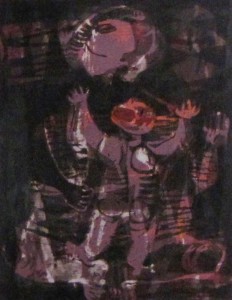
Of Time and the Child serigraph by Richards Ruben, 24 1/2”x21 1/2”
ArtistssuchasArshile Gorky, Jackson Pollock, Willem de Kooning, Rich- ards Ruben, John Altoon, and Emerson Woelffer, spent years drawing and painting, making prints and sculpture, studying the works of earlier masters and the “new mas- ters”ofcontemporaryart Cezanne Matisse,Picasso, Kandinsky, and Miro.
It was only after years of discipline and skill-development that they were able to sort through their learning and discard the unnecessary, that which no longer worked, the meretricious and set out their personal discoveries. Those statements were unique, autobiographically theirs, and yet inimitable.
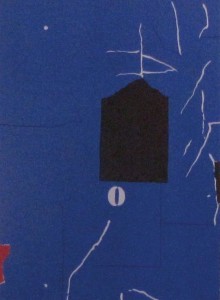
Untitled lithograph by Emerson Woelffer, 1983,30”x22”
The roster of fine and distinguished Chouinard veterans who have succeeded in making lasting contributions to contemporary art is more than remarkable. They can be found in painting & sculpture, etching & lithography, sculpture & photography, illustration & advertising, film, fashion, ceramics and fields of design that range widely from interiors to furniture to product design to architecture. Beyond this one has to mention such light and space concept artists as Robert Irwin, Doug Wheeler, and Larry Bell, who founded their own specialties. Theartfieldisanendlessmazeofopportunity,possibility,blind alleys, discovery, and tempting dreams. It requires open ended, positive, and skill based training, the accumulated wisdom ofthepast,thefundamentaltoolsofthefield,andthebreadth of experience provided by veteran instructors in the model of Chouinard.
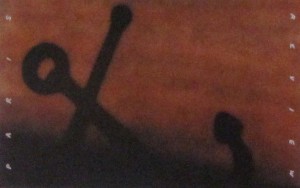
Anchor in the Sand by Ed Ruscha, 1991, 21”x32”
The works to be seen in this exhibition/auction, and the artists who have so generously contributed to it whether Chouinard alumni,veteraninstructors,orcongenialcolleagusarelinksinthe grand tradition of Chouinard and its emphasis on professional art training. The Chouinard Foundation’s efforts to strengthen the underpinnings of art training in Southern California will continue to grow in meaning and consequences for the growth anddevelopmentofartintheregionforyears to come.
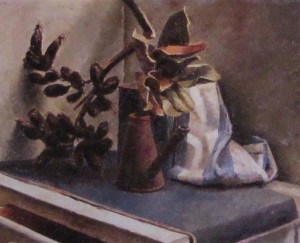
Seed Pod Still Life by Frederick Hammersley, 1942, 20”x25”
Gerald Nordland – Chicago 2003
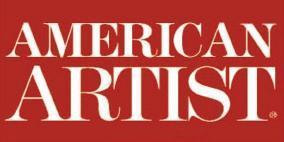
Remembering Chouinard
By Kathleen Baxter
August 1, 2001
The house in South Pasadena, California, that Dave Tourjé purchased in 1998 turned out to be muchmore than the fixerupper he anticipated. Recognizing the name “Chouinard” on the deed to the property, Tourjé began investigating the original owner. “Beinganartistmyself,IvaguelyrememberhearingofChouinard [ArtInstitute],butmyartschooldayshadbegunin1979,longaf- ter Chouinard disappeared,” he says. “I called my aunt, who had gone to art school, and sure enough, she was a student there in the early 1930s.” Tourjé then contacted another former student, RobertPerine,whosenthimacopyofhisbookChouinard: An Art Vision Betrayed (Artra Publishing, Encinitas, California). “When I told him about the house,” Tourjé recalls, “he expressed an interest (echoed by many of his alumni friends) in continuing the Chouinard story by making the house part of Mrs. Chouinard’s legacy.”ThetwomendecidedtoformtheChouinardFoundation
to revive the legacy of the Chouinard School of Art as well as promote the lasting influence of the woman who ran it for over 50 years.
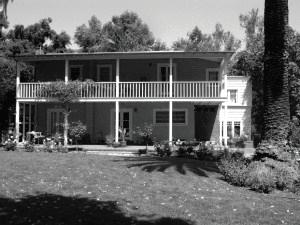
One facet of that promotion is developing exhibitions. This summer the foundation launched a retrospective chronicling the school’s history through the work of its alumni. On view through August 26, “Chouinard: 50 Years of Los Angeles Art” is divided into three sections,each devoted to a generation of the school’s student body,organized by adifferent curator,and exhibited at a different location: first generation, 1921-1945, at the Oceanside Museum of Art; second generation, 1946- 1955, at the Kruglak Gallery; and third generation, 1956-1972, at the Boehm Gallery. All three venues are in northern San Diego county.
Nelbert Chouinard opened the Chouinard Art Institute in 1921. After initial success, the school floundered at the on set of World WarII,later to be revived with an influx of student son the GI Bill. By 1949, more than 2,000 veterans were on the waiting list. Early students included Rex Brandt,Hans Hofmann,and Millard Sheets.In1957,again suffering financial difficulties,the school sought and received helpfrom WaltDisney,whosentsomeofhisearlyanimatorstothe school. The institute was eventually absorbed into CalArts.
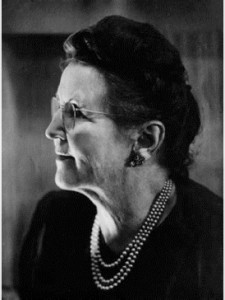
For information, write: Chouinard House, Dept. AA, 1114 N. Garfield Ave., South Pasadena, CA 91030; or call: (213) 494-8760.
Chouinard: A Living Legacy
“…the measure of an art school is its faculty and students, by the very nature of art it is inherent that art school facilities cannot be static. It is to Chouinard’s credit that a succession of distinguished art teachers have taught there for certain periods and have then moved on.
“The highest achievement of student and faculty has come from the independent art school. Long before I was born, Chouinard instituted programs that, at their best, have not yet been excelled.”
– Walter Hopps
As early as the 1920s, the Chouinard Art School was building this attitude. By World War II, its founder Nelbert Chouinard had become a permanent fixture in L.A. Then, after fifty-one years of nourishing superior artists, both students and
teachers, the school suddenly disappeared, much to the puzzlement of many southern Californians who had considered Chouinard a household word.
Mrs. Chouinard had a hideaway cabin at Running Springs. On his trips to the west coast, Alfred Barr occasionally slept there. Royal Bailey Farnum, then head of RISD, exchanged visits every other winter for several years. Fred Cole, the bathing suit magnate, had been Mrs. Chouinard’s pupil at Hollywood High, and J.C. Hall, founder of Hall- mark Cards, was a close friend who monitored intriguing Chouinard students. Hans Hofmann came by in 1932 and taught for the summer. As did Alexandr Archipenko and Mexican muralist David Alfaro Siqueiros on other summers. Rico Lebrun found refuge at Chouinard and wielded a strong influence just before World War II. So did Stanton Macdonald Wright, Morgan Russell and Lorser Feitelson. New York illustra- tors and art directors, even architects like Richard Neutra and R.M. Schindler, took their turn at enlivening Mrs. Chouinard’s outwardly eclectic sensibilities that some saw as a weakness, a penchant for hiring just any art celeb that happened to pass through.

As a Pratt graduate, she was developing her own astute formula for bringing West Coast art up to speed. Fortunately for future students, she stuck with it. Her idea, according to drawing teacher Don Graham, was to give the kids a break by putting well-known professional artists in the classroom with ambitious students where the sparks could fly. The school was originally not about administration, curricula, grades, degrees or even money. It was a diverse workshop watched over by a headmistress who soft heart offered too many scholarships. Thus, the spawning of future names, students with the freedom/discipline to find themselves, transferees from Yale, Dartmouth, and Stanford, implants from New York, Texas, and Oklahoma, foreigners from Japan, India, and Germany. Near the end when she was in her eighties, Mrs. Chouinard kept an eye out. 1960s students today recall her patio talks, the respectful hush she elicited. Sometimes she would recount Walt Disney’s 1929 plea to teach a handful of his animators to draw better, how she agreed to train them for free until he had the money to pay the tuition, how years later, when the school was in financial trouble, he opened his checkbook and kept her afloat.
This exhibition is an assembly of the work of Chouinard artists, the first visual celebration encompassing three generations of them, the first pow-wow since the Grand View school’s lobby shows of student and faculty work, often sequential roles at Chouinard. The madame’s experiment became a model of art education elsewhere and for years the Chouinard Art Institute was listed in the top five art schools in the country. Her ideas and ideals persist, having affected other arts institutions, inculcated by enthusiastic gradu- ates high on professionalism. The Chouinard Foundation organizers of this exhibition are dedicated to forging a lasting legacy for a great woman. Her oar was a strong one in the water of West Coast art. – Robert Perine
Chouinard: A Living Legacy
Once, long ago, even before she left New York’s Pratt Institute, Nelbert Murphy had a series of vivid dreams. In these dreams she was keeper of a large barn crammed with students struggling with their drawing. She realized she was their teacher and so began helping each student get a handle on the process. These dreams were so vivid, in fact, that she took them to heart, knowing that a persistent message called for resolve.
Being a woman of action and responding to the untimely death of her husband – Horace “Bert” Chouinard – she moved to south- ern California in 1919 for a fresh start, taking a job as an art teacher at Polytechnic School in Pasadena and then at Hollywood High School. Later she was hired by the Otis Art Institute in Los Angeles, and by 1921 had a following of eager students, most of whom were unhappy with the shortage of classroom space at Otis. Many of these were G.I.s from World War I and they, being assertive, eventually convinced her to open her own school and take them with her. With two fellow instructors, F. Tolles Chamberlin and Patti Patterson, she found an old house on West Eight Street that would do.
With $250 in cash and a war widow’s pension of $75 a month, she took a deep breath and mustered confidence in her dream. And all of this three years before American women first voted for a president.
In short order students poured in, including young hopefuls like Don Graham, Millard Sheets, Phil Dike, and Herb Jepson, who she put on scholarships in exchange for keeping the old house shipshape. Sheets built the first Chouinard drawing benches. Graham, an archi- tecture major from Stanford, built lockers, and within a couple of years was teaching drawing, along with Jepson. By 1927 there were close to a hundred students, and two years later she was forced to seek larger quarters. Urged by enthusiastic painters like Barse Miller, Arthur Beau- mont, Sam Hyde Harris, and Clarence Hinkle, she decided to expand her dream by hiring an architect.
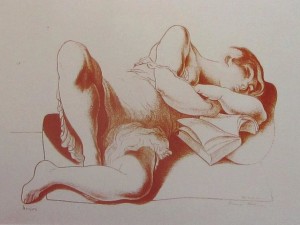
Girl Reading by Lorser Feitelson, 1938
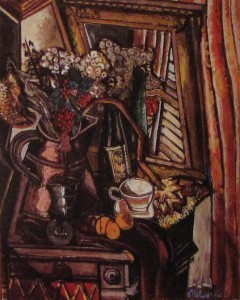
Still life with Mirror by Robert Chuey, 1952
The L.A. Times art critic, Arthur Miller, a teacher at Chouinard from 1925-1929, wrote in an article called “Chouinard Name is an Art Byword.”
She needed all her powers in mid-depres- sion. While conducting courses in an old frame house on West Eighth Street in the late 20s, the far-seeing educator was impatiently awaiting the day when the school could move into the building it now oc- cupies. The writer well remembers the excited anticipation because he was teaching in the school at the time. The move was duly made and new students poured in. Soon, a new art school opened nearby [Art Center] and cut into the revenue needed to make the heavy pay- ments on the building. This hazard was scarcely surmounted when a much bigger one broke like a thunder clap. Full depression arrived, paying students thinned out, and building payments could not be met.
The students, who had carried every stick of furniture on foot to the new location, pitched in and faculty members agreed to endure a temporary cut in pay, a condition that was repeated again in the mid-1930s when the faculty willingly bought shares in the school to tide her over. Later she bought these back and became solvent again. When she heard that New York illustrator Pruett
Carter had moved to L.A. she invited him in to teach. “Only if I can have studio space,” he bargained, and she gave him an upstairs classroom where he and students could work together. By then Graham,
Sheets, Dike, and Jepson were going strong, the first evidence of her policy to put talented and energetic students into the teacher’s harness. This automatically expanded her circle of contacts, for soon these youngmen joined by new comPortrait of Phil Paradise by ers Phil Paradise, Paul LauDowntown L.A. by Edward Reep, 1955 ritz, and Carl Beetz were Watson Cross, 1940 searching out established
artists, a few from Europe who had arrived in Los Angeles looking for jobs. Mrs. Chouinard was delighted when Sheets suggested that Mexican muralist David Alfaro Siqueiros be invited to teach. Others arrived serendipitously, as if fated to enrich activities at Chouinard: Alexandr Archipenko, Hans Hofmann, Stanton Macdonald-Wright, Morgan Russell, Lorser Feitelson, and Leo Katz. Sculptors Giovanni Napolitano, Eugene Maier Kreig, and Merrell Gage also established workshops in the early 1930s.
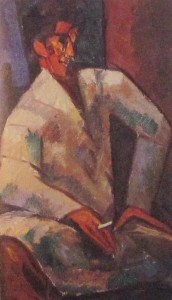
Portrait of Phil Paradise by Watson Cross, 1940
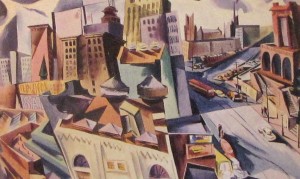
Downtown L.A. by Edward Reep, 1955
As if sensing inevitable accreditation, she hired a French and German teacher named Kitty Phelan who taught languages for two years (1926-1928) and an art historian, Dr. Ernest L. Tross, to do a semester of lectures in 1931. Though it is not relevant to this exhibition, it is noteworthy that other departments at Chouinard were under way: fashion design and illustration, magazine illustration, industrial design, set design, graphic design, and lettering. For these teaching spots, she called in the best she could find Edith Head, for example, a former student who came back from Paramount Studios to lecture in 1939. A roster of Chouinard students who segued into the local entertainment industry reads like a Hollywood who’s who.
If there was a common thread running through Mrs. Chouinard’s school it began with her idea that if a student worked hard, he/ she would succeed, both through group and individual effort. By 1941 and World War II the school had become so successful that every high school art teacher in Los Angeles was recommending their best seniors for enrollment. Mrs. Chouinard quickly learned how to help this along: each year at the Los Angeles Unified School District Art Exhibition she took pad and pencil and jotted down the names of talented kids. She would then phone their parents and give her recruiting speech, a persuasive monologue not to be ignored. Usually, and much too often, a scholarship offer followed. Good at chumming, Nelbert caught many a new student this way, steadily building her school’s reputation.
On the Chouinard premises, Nelbert was a formidable presence. Her word was law, the school’s future set in stone. Whenever she visited classes, students slipped into their best behavior. Although by 1938 her own teaching became too heavy a burden, she never questioned other teachers’ methods or curricula. Unless, of course, they had proven to be “a bad teacher.” “I like your work but if you are a bad teacher,” she would warn, “I will not hesitate to put you out.” The idea of tenure didn’t cut it at Choui nard. If she saw no re- sults, thought students were being educationally cheated, there was a second warning to the teacher, and occasionally expulsion.
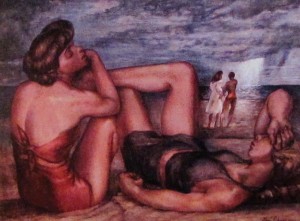
On the Beach by Palmer Schoppe, 1941
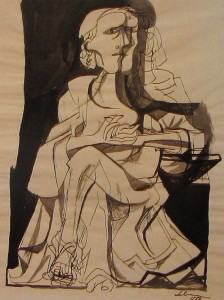
Woman of Sorrows by Rico Lebrun, 1952
By the end of the Depression and the onset of World War II, Chouinard had become a haven of professionalism, a place to study with the best art- ists in town, men and women working in the real world. Quality was standard number one, provid- ing talent for design aware industries, number two. Students passionate about the “fine arts” were encouraged to go to New York and sweat it out in a city replete with galleries and museums.
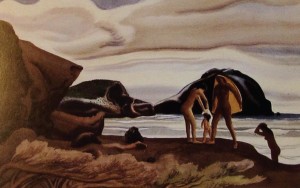
Bathers of Miramar by Millard Sheets, 1933
Some teachers became dependent or partially dependent on Chouinard for their livelihoods: Lawrence Murphy, Phil Paradise, Don Graham, Herb Jepson, Watson Cross, and Bill Moore, for example. Others came and went: Rico Lebrun (1 year), Henry Lee McFee (2), Ejnar Hansen (4), Dan Lutz (7), Ben Messick (8), and Richard Haines (9). Others, comfortable in such a hospitable environment, welcomed the habit of hanging around: Bathers of Miramar by Millard Sheets, 1933 Millard Sheets (13 years), Harold Kramer (14), Ed Reep (20), and Cross with the longevity record of 27 without a break. A few devoted students hung around as well, like Elin Waite, who claimed to be the student with the longest run (10 years)
Nelbert liked the idea of a core faculty group of seven or eight regulars plus a variety of temporary influences. This system, in place for more than fifty years, gave Chouinard an accumulated faculty of over 400 artists by 1972, a broad spectrum of influence for the West Coast. It seems that almost everyone in the visual arts in Los Angeles touched base at Chouinard at one time or another, some briefly, but not without leaving their mark.
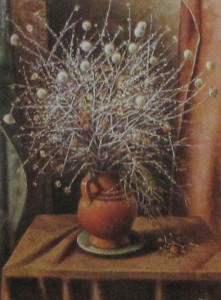
Bouquet from the Desert by Henry Lee McFee, 1944
By 1943, mid-war, enrollment and tuition mon- ey dropped dramatically and Mrs. Chouinard was forced to move to smaller, cheaper quarters on Sixth Street in an old Chinese Laundry and auto garage at Benton Way. She was devastated, cha- grined, but held onto her older draft-exempt core of regulars. Women students were in the majority then, but within three years returning G.I.s were lining up for their G.I. Bill privileges. At one point there were a thousand male students on a waiting list, and Mrs. Chouinard asked female students to step aside for these “boys who saved our democracy.” The war changed everything for every- body, and the money began flowing into Chouinard again, making it possible for Nelbert to buy back the Grand View building in 1949. “It was the greatest moment of my life,” she would say proudly as students and faculty filed back into the refurbished headquarters and began again. Many of us G.I.s hadn’t known about the Grand View facility and so were pleasantly impressed by its superiority over the makeshift, Sixth Street school.
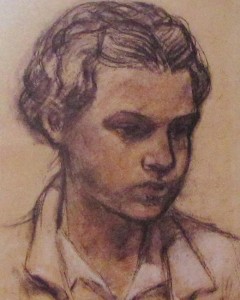
Ludmila by Alex Ignatiev, 1930s
Mrs. Chouinard was 70 by then and overjoyed to be sitting in her corner office again, the one designed to her specifications, cleverly adjacent to the lobby where she could keep an eye on activities.
Perhaps she would again have time to speculate on the art scene, where it was headed. She had personally rejected the “Eucalyptus School” (1920s) for European “Modernism” (1930s), had watched “Abstract Expressionism” and “Bauhaus design” infiltrate Chouinard (1940s), and was soon to be tested by the freewheeling experi- mentation of the 1950s and 60s. “Oh well,” she could have been thinking. “The applied arts have always gotten us through.”
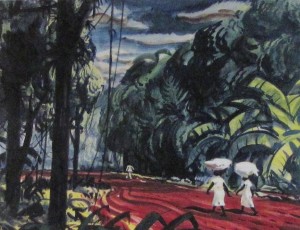
The Islands by Lee Blair, 1939
Chouinard: A Living Legacy
THE MIDDLE YEARS (1946-1960) – James Aitchison
Apology
The influence Chouinard had on the Los Angeles art community has been addressed by others much more qualified than I. What I bring to this arena is neither scholarly nor groundbreaking; I can speak only as an appreciative artist who was fortunate enough to spend a little time at the old school. My observations and ruminations are subjective. I am not a passive observer but a participant looking back.
Since being asked to write a little something about the middle years, I have read a great deal: pored over old issues of Artnews, dipped into the slimy sea of Los Angeles Times microfiche, cracked the petrified binding of yellowed biographies not read since shelved, and mused over esoteric art mags from the turn of the (last) century. I have ingested, but in no way fully digested, the flavor of the era. Only after discussing my take on some of the more intellectual and hotly debated historical data with literature professors and art collec- tor Bram Dijkstra did I realize I did not know what the hell I was talking about. To do the era justice would require more than I am able to give, and it may not be healthy for an artist to be aware of too much subterranean subterfuge: gossip. As critic Harold Rosenberg said, “Statements by artists are to be regarded with suspicion and never taken as the last word as to fact or attitude. Jealous of their originality, artists are prone to deceit and self-deceit.” Maybe that is why I cannot articulate it. It is mine. Sharing my adventure is my a priori charge…
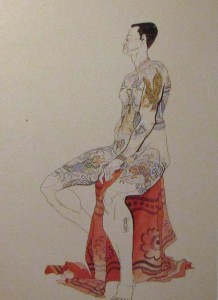
Royally Tattooed by Ray Rich, 1998
The Gathering
…Like my chat with Neil Fujita, who is now a resident of New York. (His watercolor, “Fort Moore Hill,” [1948] from the collection of Jan Ray Rich, is among works in the Middle Years venue.) He was gracious and understanding of the happenstance of my assignment and thought the best way to handle it would be to send me a broadside,title Seeing is Feeling, and excerpt from the memoir is currently writing. He did, and it is beautiful. “It is our duty to communicate the ultimate meaning of what we see,” he writes. “…objects have a past and a future. When we know the object’s past or can guess its future, it transcends experience and becomes an embodiment of knowledge and expectation. Could Matisse have painted an orange without ever having tasted one?”
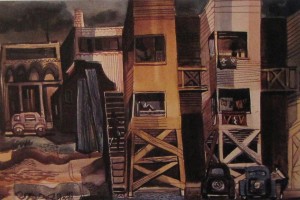
Fort Moore Hill by Neil Fujita, 1948
When the wee Ynez Johnston invited Ed and Vivian Flynn and me into her quietly joyous studio home to select a piece for the Kruglak show, it was a calming and uplifting experience. Her presence is magically and mysteriously lyrical, like smiling teardrops of wonder, much like her work. When I asked where I might find an Emerson Woelffer bronze, she quietly said, “Oh, I have one in the other room.” I asked what her relationship to Chouinard was. She said, “I taught there for a while.” Then, without a shade of regret or apology, she demurred and said, very simply, “But I don’t think I was a very good teacher,” and smiled. Then I said, “Well, Ynez John- ston, there are three artists who learned a lot today.” Then I spoke to Jack Rutberg about Hans Burkhardt. I pressed him on his thoughts about the Middle Period. He did his best and gave me a lot of heartfelt biographical informa- tion about Hans. The most memorable tidbit was an insight into Hans the critic: Rico [Lebrun] was a great artist, Rutberg quotes Hans, “but he used too many lines.”
While visiting Ray and Janet Rich (both Chouinard gradu- ates), who have a lovingly assembled collection of works by faculty and alums, I spotted a Johnny Altoon (as Ray and Janet referred to him), signed “to Ray and Janet.” Ray said, “Oh, Johnny drew that after Janet had our first baby and gave it to us. The legs are too short, though. Johnny always started at the top and worked down, so he had to always make the legs short. He was Armenian, you know. They love kids. Johnny really loved children.”
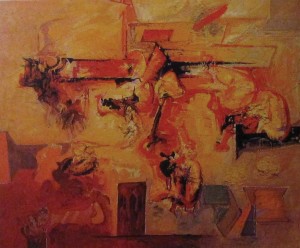
Golden Journey by Hans Burkhardt, 1967
I spoke to non-Chouinardians about the impact of Chouinard. Two of Chouinard’s most prominent instructors, Emerson Woelffer and Matsumi (Mike) Kanemitsu, studied at schools far different from Los Angeles in climate and temper: The Chicago Art Institute and New York’s Art Student League. Chicago Art Institute graduate, noted painter Walter Wojtyla, analyzed it this way: “the [Chicago Art Institute] instructors weren’t much, but it really didn’t matter. It is by looking at the masters you learn about art. Not from teachers. We had a pretty good collection there in Chicago.”
When this exhibition started to grow from a profound idea and inchoate sketch into an actual possibility, I came to discuss the whole enchilada: art schools, Chouinard, Rico Lebrun, Kane- mitsu, and more over a martini with Sternberg (a Brooklyn native). His first reaction was to say, “Go to the studio and close the door, dammit!” Then, weighing my questions more seriously, he reflected on over 40 years of teaching at the Art Students League, with appreciation for his excellent students who came from Japan to study printmaking, among them Matsumi (Mike) Kanemitsu, and from Italy, Rico Lebrun. “Lebrun taught at Chouinard for a while, didn’t he? He stayed in my studio on 14th Street in New York when he first came over from Italy and took classes at the Art
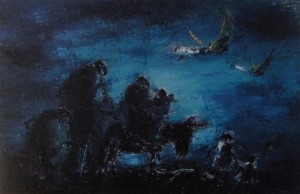
Going Home by Dan Lutz, 1946
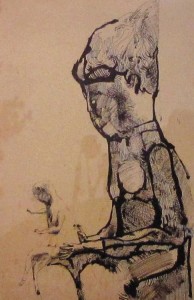
Mother and Child by John Altoon, 1954
Students League. He was the best artist to teach out here. But Chouinard as compared to the League? The art students must be where the museums are The Met.”
Then I met Walter Pomeroy. When we spoke on the phone for the first time, he asked me what I was looking for. I said I was looking for a work by Guy Williams, an Altoon, etc.. He said, “Oh, well, why don’t you just come over and have a look. I don’t really know what you want.” I did and walked into a whole room full of Guy Williamses. While I photographed the work I had selected for the show, Walter called Guy. “There is some guy here who wants to use one of your pieces in a show. I don’t know what it is all about. Why don’t you talk to him, OK?” Then over the phone I heard the same kind, gentle voice I’d heard for the first time in 1962. “Oh yes, Jim. That is a nice piece.”
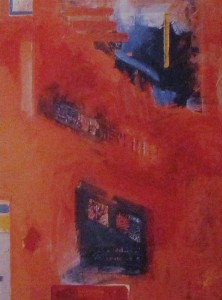
Chouinard Series #24 by Robert Inman, 1998
Perspectives on the Exhibit
At the Kruglak Gallery, I have assembled works by a number of former students and teachers. Many of them taught the Last Generation artists. Judg- ing by the number of artists still working, then did one hell of a job. Many of the Middle Generation faculty were artists first and teachers second. Mrs. Chouinard sought them out. They were big personalities, not professional educators. Much of what an art teacher does for a young artist is ephemeral, anyway. I believe Mrs. Chouinard recognized this mysterious phenomenon. This usually happens in the arts: dance, art, music, or poetry. You get it, but you’re not sure what you got. You only find out after you get out.
Chouinard was more than just a school. It was an idea in Time. When Mrs. Chouinard looked for a place to set up her art school, she chose wisely. Los Angeles had an “art district” then: Westlake. The area was home to the Los Angeles Art Association, to art galleries, frame shops, art supply stores, and art studios. Chouinard was a piece of real estate so profound that, if still perking, the MacArthur Park neighborhood, (now Ramparts) in which it was originally set might instead be called the “Soho” of Los Angeles.
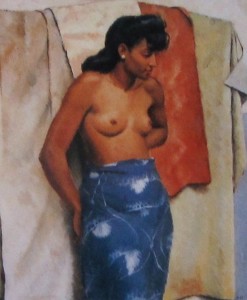
Untitled by Fred Hammersley, 1946
When Mrs. Chouinard set up shop at Chouinard’s second site, on Grand View in West lake, Los Angeles was an expanse of flat land, still surrounded by orange groves. It pulsated with wealth and choked with poverty movie star mansions and dust bowl refugees, rail road money, and railroad bulls, Santa Anita Race Track and migrant worker camps. The two worlds collided on one cultural stage, entertained by such dramas as that of Amee Semple MacPherson, or sometimes a cultural feud; like the one between the Los Angeles Art Association and County Supervisors that spawned the creation of the Los Angeles County Museum of Art, all played out under the watchful eye of the Los Angeles Times.
My uncle, Phil Robbins, an artist and an innovative photographer, had a studio in the Westlake district. He did not drive a car. There were streetcars then. My aunt and uncle had a summer place in Long Beach and commuted by Red Car. He was a professional photographer and taught photography at UCLA, but was also a watercolorist, the primary medium of artists at the time and the primary medium of students and instructors at Chouinard before 1950. Watercolors were cheap; oil base paints were expensive and scarce. This remained the case until well after the end of World War II. The raw pigments came from Europe.
Something was always going on to prevent shipments from getting through. Wars, mostly. In the mid-1940s, GIs returning from World War II took full ad- vantage of the GI Bill of Rights to attend class at Chouinard. Works by many of those former GIs hang in the Boehm and Kruglak Galleries. The GI wanted to forget about war and get on with building a career. But some established artists returning from the war remembered the war in their work. Millard Sheets, Phil Dike, and Leonard Cutrow returned changed artists. Their watercolors took on a more humanistic quality.
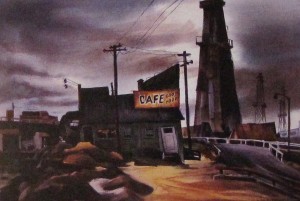
Café by Leonard Cutrow, 1950s
California was still a seat of artistic regionalism in 1945. Choui- nard students had a way of thumbing their sunburnt noses at New
Exploration of an Iris by Ruth Osgood Salyer, 1952 York. The 1950s and ‘60s saw an infu- sion of talented faculty from Europe, New York, Japan, and other distant but much more cosmopolitan climes. In December 1958, critic Jules Langsner (who taught art history at Chouinard from 1960-1967) in his “Art From Los Angeles” column in Artnews reviewed works by Lorser Feitelson, Robert Chuey, Roger Kuntz, James Jarvaise, Stanton Macdonald Wright, Richards Ruben, Rico Lebrun, Hans Burkhardt, and Richard Haines, all exhibiting si- multaneously in Los Angeles. All but Kuntz had taught or were teaching at Chouinard. Of this group, only Emerson Woelffer, Matsumi Kanemitsu, and John Altoon are missing, representing the core group that brought Chouinard into the modern era. These artists provided the frame of reference for the students of the final years, who have in
disputably dominated the Los Angeles and southern California art community ever since.
The philosophy Mrs. Chouinard brought to Southern California never wavered: corral motivated young artists, hire the most dynamic artists working in the West, and turn them loose. Before all else, teach them to draw. So it was until Chouinard closed its doors in 1972. Students were required to learn to draw. Sounds simple, even vacuous, to today’s ears. A Chouinard student arrived al- ready being able to draw pretty well. At Chouinard they learned to draw better and to know why. Among Rico
Lebrun’s letters is this thought:
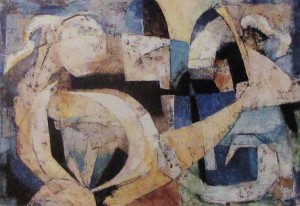
Exploration of an Iris by Ruth Osgood Salyer, 1952
“Better men than you have never had this nightmare touch and yet they pass for draftsmen. They thought Toulouse Lautrec had it because he ‘surprised’ the perverted visage of the riffraff: but that is just skillful malice of talent. Grunewald surprised the story of flesh trulyI bet you he was constantly in a more traumatic and dan- gerous place. Cynical zest is small; despair of ever finding God in the flesh, great.”
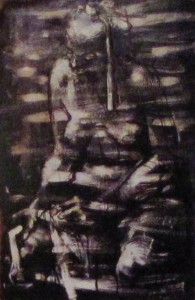
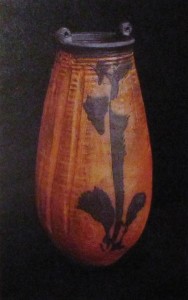
Left: Ceramic Pot by Otto Heino, 1997
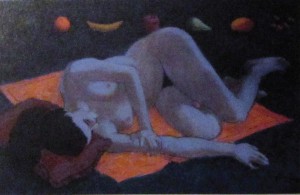
Below: Emily with Fruit by Sam Clayberger, 1998
THE LAST YEARS (1960-1972) – Nobuyuki Hadeishi
The only record of the last day at Chouinard the commencement ceremony of 1972 was made by photography instructor Gary Krueger. One of his photos shows the faculty, friends, relative, and graduates seated in the patio. This picture tells the story of Chouinard. Though many teachers are missing, old-timers were there, including Watson Cross and Don Graham (in the lower left looking pensive).
Graham was chairman of the faculty, essentially our boss. Next to him is Lou Danziger, advertising design teacher. In 1970 he refused an offer from the CalArts administrators to teach at the transitional facility Villa Cabrini, a former Catholic girl’s school because he felt needed at Chouinard. The head of the basic design program, Bill Moore, is in the next row in the characteristic pose he took when not happy with student work. Missing is his trademark cigarette.
For 34 years, Bill Moore taught the basics of design as if they were a true science. He was the most feared in- structor, both hated and loved. Whenever Chouinardians get together, his name comes up. At the center of some of the great Chouinard controversies in the 1960s; he once torched a work by Ed Ruscha in the school gallery with his famous Zippo lighter. As he burnt a corner of Ruscha’s piece, which incorporated cigarette butts as design elements, he said with authority, “What this piece needs is a little burnt edge to complete it.”
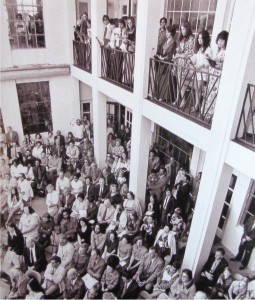
Commencement ceremony at Chouinard in 1972
By 1955, Nelbert Chouinard had retreated from admin- istrative involvement in her school and Mitch Wilder was hired as director. Wilder, a respected administrator, had been director of the Colorado Springs Arts Center and the Colonial Williamsburg Foundation prior to Choui- nard. Until he arrived, Mrs. Chouinard had been helped by James Normile, her humanities teacher and registrar, along with Don Graham and Harry Diamond, an illustrator, successful art director, and head of the ad design department, who was married to Mrs. Chouinard’s niece, Fran. Their daughters, Karen and Suki, attended Choui- nard and spent hours in Vivika and Otto Heino’s ceramics workshop.
Walt Disney, assuming an active role in the school at this time, had established a professional relationship with Mrs. Chouinard in 1929. In 1956 he had stepped in to save the school from financial disaster caused by a bookkeeper who had been embezzling. Without Walt’s money, Nelbert might have been forced to close the school in 1957.
By 1969 the Disney interests had owned the school for eight years and had changed the name to California Institute of the Arts in 1962. The school continued without other changes until Disney’s death in December 1966. Both Mrs. Chouinard and Disney had trusted Wilder, the new director, to oversee the school’s finances without interfering with instruction. When Mrs. Chouinard retired in her late eighties, the school was in the hands of the department chairmen and Wilder. By the time she died in 1969, her school had no resemblance to its former self.
In 1960 Wilder brought in Gerald Nordland to deal with aesthetic matters, appointing him Dean of Faculty. Nordland was an art critic for Frontier Magazine and knew most of the artists in Los Angeles. Though trained as a lawyer, his law practice ended with the Army in Korea. Then, he studied art history at Yale and wrote a book on Gaston Lachaise.
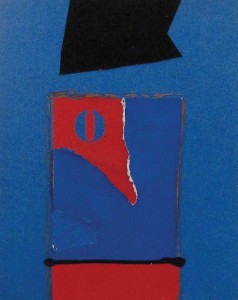
Blue O by Emerson Woelffer, 1979
The Wilder and Nordland team continued with Mrs. Chouinard’s basic aesthetic philosophy. Together with the faculty, who had helped develop the then current curriculum, they created a new formal curriculum The Chouinard Plan, a hundred page book Nordland compiled “from the best thinking of the faculty” as the official document for reaccreditation by the Western Association of Schools and Colleges and the National Association of School of Art.
Nordland supplemented the core faculty with John Altoon, Connor Everts, and the first photography instructors, Edmund Teske and Alex Hovsepian. (“Core faculty” implied tenure, yet no structured tenure system existed at Chouinard.) Robert Irwin had joined the faculty a year earlier. Everts and Irwin had been Choui- nard students on the GI Bill in the late 1940s and early 1950s. Altoon, a buddy of Irwin’s at Dorsey High, had studied at Otis. After teaching at Chouinard in the early 1960s, Altoon abruptly resigned for health reasons.
Another influential teacher, Richards Ruben (1954-1961), taught drawing, painting, and printmaking. Ruben had studied at Chouinard with the enigmatic painter and school legend Lawrence Murphy, a former member of Gertrude Stein’s inner circle in Paris. Blue O by Emerson Woelffer, 1979 Murphy drew constantly, a passion he passed on to Ruben.
Having now seen drawings by Old Man Murphy, I recognize his profound impact on Ruben, who became the avant-garde paint- ing guru at Chouinard in the mid-1950s. Murphy opened space on the working surface in ways different from Cezanne or the Cubists, using twisting movements, more like carving into the surface (similar to the way Arshile Gorky or John Altoon would later define form), a shifting of axis to express space and volume, unlike the movements used by the more Cezannesque Don Graham, who emphasized the flat surface with open passages, more in tune with Hans Hofmann’s “push pull” handling of space. Murphy’s students achieved a more tactile feel in their work while Graham’s students developed a more graphic or two dimensional spatial feel.
Despite such differences, all good Chouinard instructors possessed the ability to communicate via a graphic language primarily drawing. In the fine arts department we learned to “read” works, both ours and others’, by listening to group critiques led by instructors. Both Graham and Ruben spent hours going over student work. It was not unusual for students to turn in four or five sketchbooks, a week’s worth of work. What we learned was not what was on the instructor’s mind, but on ours. I often thought of Don Graham as a mirror.
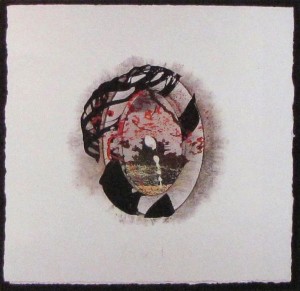
Above: Fraction Elipse #1 by Larry Bell, 1997
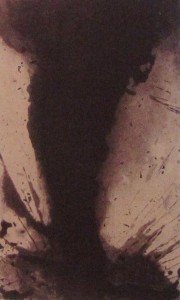
Right: Tornado Etching by Joe Goode, 1993
Ruben would spend at least an hour, sometimes longer, at the end of each ses- sion going over each student’s work. He would not miss even one drip on a canvas nor the positioning of a single, careless stroke. Soon each of us was paying close at- tention to everything we put on canvas. In time we learned to “read” others’ works as well as our own. This ability to show students the patently ambiguous became the primary focus when we ourselves began to teach. Ruben dug deeply into our minds (and his) during those critiques, often sharing philosophical and aesthetic problems. One memorable evening, after having taken his evening class for two years, I finally understood nearly everything he had been telling us. When I told him that, over drinks at the William Penn Hotel, he responded, “Could you explain it to me because I don’t know what I was saying tonight.” At that moment I understood that it wasn’t about him. The revelation was within me. Ruben eventually left Chouinard to teach at Pomona College and then NYU, Cooper Union, and Parsons in New York.
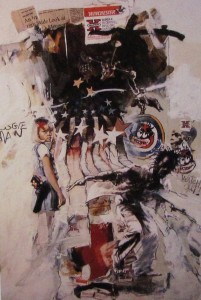
Who’s the Boogie Man? by Edmond Bereal, 1999
Then there was the incomparable Emerson Woelffer who came to Chouinard in 1959. He was a transition teacher, an artist with great taste and sophistication. Rob- ert Motherwell, his associate at Colorado Springs Art Center, had told him, “Em- erson, you and I are the most tasteful artists in America today.” While Motherwell thought of himself as an Abstract Dadaist to whom randomness was a dignified and acceptable form of art-making. Paul Brach, dining with the Woelffers one evening, challenged Emerson to destroy one of his own paintings if he was sincere about the work not being precious. Shocked, Brach told me, “Emerson picked up the most beautiful one and slashed it. I tried to stop him but he wouldn’t listen. I won’t chal- lenge Emerson again.” Woelffer fit nicely at Chouinard at a time when Dadaism was coming into vogue, especially with the showing of Rauschenberg and Johns at the Ferus Gallery. Abstract Expressionism had departed with Richards Ruben. Connor Everts, Altoon’s friend and a Chouinard faculty colleague, told me recently about a time “when John was teaching a night class in drawing and he went into the next studio where Leonard Cutrow was having his students draw a suit of armor. He said to Cutrow in his characteristically booming voice, ‘Why can’t you have them draw something soft and nice like a nude?’ This made Cutrow furious and they got into an argument.” The next day Altoon called the entire Chouinard community into the pa- tio, where he apologized to Cutrow and promptly resigned from teaching. Altoon died of a heart attack not long afterwards. He was one of the most gifted artists and teachers at Chouinard, perhaps a genius, who was barely in his forties. He had regularly used shock to help students be freer with their drawing.
After the mid 1950s the influence at Chouinard shifted to the new generation of instructors. While indispensible to the school’s Foundation program, most older generation instructors were no longer working as artists nor did they push students to seek new ground. John Coplans, editor of Artforum in the 1960s, believed that Chouinard students were good artists not because of what they learned in the classroom but because of what they gleaned directly from the art world. The Chouinard Plan called for outside profes- sionals (including Coplans) to lecture and evaluate student work. For example, Coplans taught art history, along with eminent art critic and historian Jules Langsner, a friend of Jack- son Pollock, Phillip Guston, and Reuben Kadish.
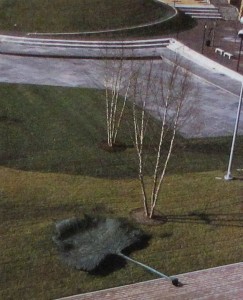
Above: Teapot by Ralph Bacerra, 2001
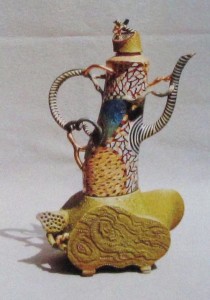
Left: Belief by Terry Allen, 1999
The artists that Nordland brought to Chouinard included Man Ray, Ad Reinhardt, Larry Rivers, Reuben Nakian, Esteban Vicente, and Raymond Parker. Additionally, art directors, accountants, art dealers, and museum people shared their expertise about how artists deal with the real world. Chouinard continued to be a practical school in the tradition of its no-nonsense founder.
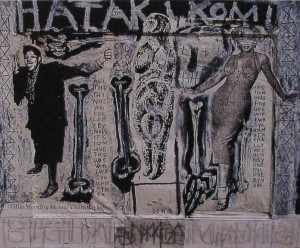
Above: Slap Down by Gary Wong, 1994
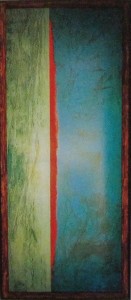
Left: Desert Seascape by Boyd Elder, 1999
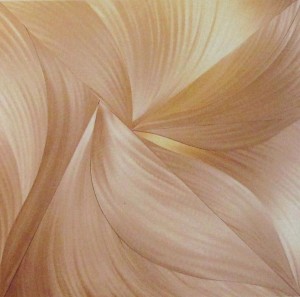
Below: Light Trap by Laddie John Dill, 2001
Later, the humanities and sciences were added and taught by people from unusual places, including a cacti specialist from the Observatory and teachers recruited from USC, UCLA, and Occidental College. Once, we spent a whole semester visiting the Cactus garden at the Huntington Library and going to Palm Springs, Joshua Tree, and other desert en- vironments to draw succulents. Academic subjects, however, were secondary to the primary goal of becoming artists. English and lit- erature courses often convened during lunch. The astronomy class was held at the Griffith Observatory. The basic requirement for humanities instructors was to be interested in art students. Without that, they were not hired.
Robert Irwin was the first Chouinard instructor to depart from the conventional notion of art instruction. He stressed the importance of the individual, how each student must search within rather than build on the past. He pushed students to ask themselves why they were doing art, a question Irwin himself couldn’t answer. Irwin had deduced, by looking at previous art, that important artists challenge viewers to look at art and life in a new way. He saw artmaking as inquiry. Students who studied with Irwin at Chouinard include Ron Miyashiro, Larry Bell, Ed Ruscha, and Joe Goode, advertising design majors who switched to fine arts because of him.
We spent all of Irwin’s summer session at a Palos Verdes beach trying to draw water and sand. The clear sky made it difficult to create interesting drawings. Some of us succumbed, body surfing instead of drawing. Irwin fascinated us by talking about creating ephemeral art. He spoke of an island in the Pacific where the only art was drawings made on the beach; no perma- nent artifacts existed there. And there was the Zen garden in Kyoto whose rocks were mostly buried, yet still part of the art.
With the departures of Ruben, Irwin,and Altoon, the attention shifted to Connor Everts, Matsumi Kanemitsu, and Emerson Woelffer. Kanemitsu came to Chouinard in 1965 to take over Woelffer’s class while Woelffer took a sabbatical in Italy. Evert’s task was to develop the printmaking department.
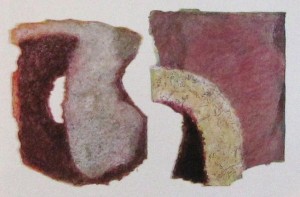
Venetian Fragment – Diptych A by Richards Ruben, 1991
Along with Woelffer and design instructor Sy Steiner, Everts organized a three class gathering on the last Friday of each month that featured poets, artists, and writers as guest speakers. The vacant lot north of the Annex was cleared and turned into a patio called “The Beer Garden.” Events held here soon attracted students from the main building. The interdisciplinary nature of these “happenings” resulted in several play productions in the Chouinard patio, including Sartre’s No Exit. When I returned from Japan in 1966 to teach, the “Beer Garden” and Connor Everts were gone. Shiro Ikegawa, Joe Funk, and I took over the printmaking department.In the 1960s the ad department was the largest at Chouinard, famous for giving “assignments that required the exploration and celebration of the ‘esthetics’ of the most mundane, vulgar objects and materials in our environment…,” according to department head Marv Rubin, “Students were exposed to artists not included then in any segments of the fine arts department, e.g., discredited Dadaists, surrealists, calligraphers, and pop artists.” The ad department was freer to incorporate ideas, new and old, than the fine arts department which was at least partially burdened by history and tradition. As avant-garde as the fine arts department was, it had prejudices about certain aspects of some art movements, specifically photorealism and surrealism. Everything else was encouraged, but it was not the “anything goes” approach of the ad department. Rubin credits the loose structure at Chouinard “for allowing independent minded students to migrate among the departments.”
During the 1960s, conflicts developed between the anti-Vietnam war students and instructors who had served in WWII or, in Leonard Cutrow’s case, had been a combat photojournalist in Vietnam. America’s social upheaval focused atten- tion also on the issue of free speech, including pornography. Connor Everts was arrested and charged with exhibiting a pornographic drawing at the Zora Gallery. He was exonerated after the entire art community came to his defense, including Gerald Nordland who flew out from Chicago to testify.
The nature of art was changing dramatically. The notion of the artist as visionary who could spearhead change in American culture came to a gradual halt. Artists seemed to lose the will, if not the ability, to be among the primary forces for change. Chouinard was affected but kept moving forward. The Grand View facility and annex were overflowing with students. Through this period, Choui- nard maintained a balance of diverse views and a very diverse student population, with many races and economic backgrounds represented. In a sense, we were esthetically all minorities at Chouinard. The only consistency was that drawing continued as the main emphasis. There were disagreements on how to draw, or what constitutes good drawing, but not about whether drawing was important. Some artist like Irwin believed in having students begin by drawing objects (including the human figure) exactly as they saw them, with no expressive lines permitted. Paradoxically, teachers Watson Cross and Herb Jepson encouraged students to experiment Jepson emphasizing the psychological aspects and Cross being more imageoriented, leaning toward illustration with no concern for space time, figure ground, or other contemporary issues being explored elsewhere.
A surprisingly important department was ceramics, headed by Otto and Vivika Heino, a husband and wife team who came to Chouinard via USC in 1957. Vivika, who had studied at Alfred University, turned Chouinard’s small hobbyist group into a major department with the help of Otto, her former student. Before leaving Chouinard, they denoted a large professional kiln. They also founded the popular Annual Chouinard Pottery Sale in which students and faculty participated. Though many high-quality pieces were made by teachers, everything was simply stamped with a “C.” Proceeds funded state of the art pottery wheels and other equipment. Ralph Bacerra, a gifted student of the Heinos, took over the department after they left and remained chairman until the end. While the Heinos were conventional ceramicists, Bacerra is an experimental artist whose works blur the boundaries between conventional ceramics and pure sculpture. Other well-knowns from this department were Jun Kaneko, Mineo Mizuno, Adrian Saxe,
Peter Shire, and Juanita Jiminez (who also taught). Though not a required course, a majority of the students took ceramics, getting a feel for the tactile quality of earth and an appreciation for the natural processes of forming and firing clay.

Hollywood by Ed Ruscha, 1968
Though Vivika Heino has passed away, Otto works harder than ever, lamenting that the kiln they donated Chouinard was taken to the CalArts campus in 1972 but never fired. Bacerra told us, “They got a bulldozer, dug a big hole, and buried [it].” Said Heino, “They don’t think ceramics is fine art over at CalArts!”
The required Materials and Methods course taught students to work with three dimensional materials. Instructors Malcolm Leland and John Canavier guided students in welding, working with plaster, cutting with a torch, and shaping papier mâché, a favorite of Canavier’s. In front of the Convention Center in downtown San Diego stands a work by Mel Edwards, a young sculpture teacher at Chouinard who eventually went to New York. In the San Diego Civic Center is a kinetic bronze and water sculpture by Leland. In the final two years, Stephan von Huene taught sculpture along with Canavier, as well as drawing and painting.
As of this writing, the Chouinard school building remains intact, surrounded by empty land awaiting development. It is an eerie sight. As I walk through the building, I hear choral music, a strange contrast to the noontime, rooftop music of my time, with Ed Be real on conga and Llyn Foulkes on bongos.
I stand on the balcony where Gary Krueger took those last graduation pictures. Behind me is the studio where I taught fresh man painting. A well dressed woman emerges from the center studio and politely speaks to me in Korean. I don’t understand her, so I say in English, “I didn’t mean to disturb you. I used to teach here.” She nods pleasantly and returns to the studio where, to my surprise, a roomful of well dressed people is staring at me. It’s a church choir. I have disturbed their rehearsal. They are in the very room where I had drawing classes with Irwin and Eva Dick stein Roberts in 1958.
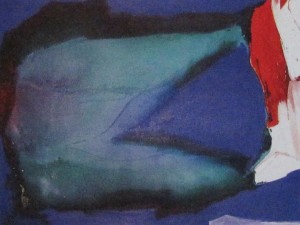
Silent II by Matsumi Kanemitsu, 1971
With soothing choral music drifting through the air, I envision the building coming to life again. It still has that art school feel, with lots of stored up, positive energy in those thick cement walls. The building rests peacefully…quiet, serene, because Mrs. Chouinard is still here. I feel that, at any moment, her students and faculty will burst through the entrance and the controversies will begin all over again.
CHOUINARD REVISITED
By Peter Clothier
Peter Clothier is an art writer and critic. He was Dean of Otis Art Institute from 1976 to 1979.
It’s a good time to celebrate Chouinard, while its influence is still vibrant in our collective life as an art community in Southern California.
This exhibition honors the singular vision and dedication of the determined woman whose name the art school bore. Nelbert Chouinard started out with nothing but her love for young artists and their creative spirit, and her generous need to offer them encouragement and training. Her gift reverberates not only through the impressive fifty year roster of her students, but through those whom they, in turn, have taught or influenced. I’d venture to say there’s barely an artist working in Southern California today who has not been touched in some way by the vision of this richly achieving woman.
The exhibition also celebrates the diversity of Mrs. Chouinard’s faculty and students. It celebrates the famous and the not so famous, the avant garde along with the mainstream, the traditionalists along with the groundbreaking inviting us to consider how speedily the passage of time turns one into the other. The multiplicity of vision of these artists testifies to the unpredictability of cultural preference, as well as to the eventual pointlessness of assessing the value of an art work or an artist on the scale of current taste.
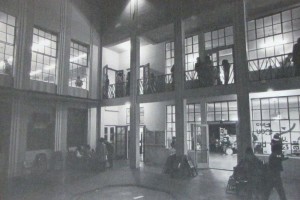
That said, the number and diversity of “well-known” artists who passed through Chouinard remains astounding, crossing at least three generations: first, the late Millard Sheets, Mike Kanemitsu, Lorser Feitelson, the everebullient Emerson Woelffer, the impeccable Frederick Hammersley; the generation who first came to attention in the late fifties and early sixties John Altoon, Robert Irwin, Connor Everts, Joe Goode, Ed Ruscha, Llyn Foulkes, Richards Rubin, John Mason; and the succeed- ing wave who came along in the later sixties and the early seventies Guy and Laddie John Dill, Chuck Arnoldi, Mary Corse, Terry Allen, Larry Bell, Allen Ruppersberg, Tom Wudl, and Elsa Rady, to mention just a few. They embody our history from plein air impressionism to post sur Last night at Chouinard, 1972 realism, from Abstract Expressionism to “Light and Space,” from Pop and Minimalism to the Conceptualism of the early seventies.
It may, indeed, have been not merely the financial crunch but also the advent of Conceptualism that super annuated Chouinard, since it challenged everything the school stood for since its inception: the traditional skills of drawing, painting, and sculpting, a reverence for the art abject as a discreet and privileged entity, the value of slowly acquired mastery. As Dean of Otis Art Institute, shortly after Chouinard’s painful transformation to CalArts, I watched a faculty and student body at war with itself over just these issues. Confusing and distressing as this turmoil was, I view it now as a necessary transition, at a moment when one approach to art had exhausted itself and needed the infusion of new thought and vision.
Our institutions are, like everything else, impermanent. For all the lasting aesthetic satisfactions of its artworks, this exhibition offers an important lesson in the impermanence of such things as art world recognition, reputation, and reward. It’s important not only for the names that are familiar, but for the ones that are less familiar, or not at all; for it is those who survive as artists, without critical or commercial approbation, who mostly clearly exemplify what it means to be an artist to give one’s life to a creative urge that brings no tangible reward, but is rather something we are simply given to do. It is, despite all discouragement from a world in which “success” is often measured by outward manifestations, what we have to do with our lives.
It’s a good time, then, to celebrate the spirit that made Chouinard possible the spirit that pervades this exhibition and inspired the vision of its founder. Art is not, eventually, about fame and fortune, or critical approval. It’s about the stuff we have inside us, and our effort to dig it out and take a look at it. It’s about the tough, day to day work of finding out who we are in relation to the world, of persisting on the difficult path between desire and resistance, aspiration and failure. It’s about learning, slowly, sometimes painfully, to see.
This is the great achievement of Chouinard, where the artist faculty prepared the way for creative minds to discover their own path for themselves, and offered the example of tough-minded dedication that would keep them on track regardless of external standards. It is this vast and largely unseen army of working artists, far more than the constricted scene of hype and commerce, that constitutes the real “art world.” We owe a debt of thanks, then, to Nelbert Chouinard and her art school for helping them along the way.
